The Art of the Prairie Glass House

Richard Greenberg (1941-2009), Abraham Lincoln, oil painting based on the last photograph taken before his assassination. We purchased this work from the Cinema Gallery in Urbana just after we moved to Champaign in 2006 . Lincoln's face spoke to us, expressing the accumulated pain of the Civil War.
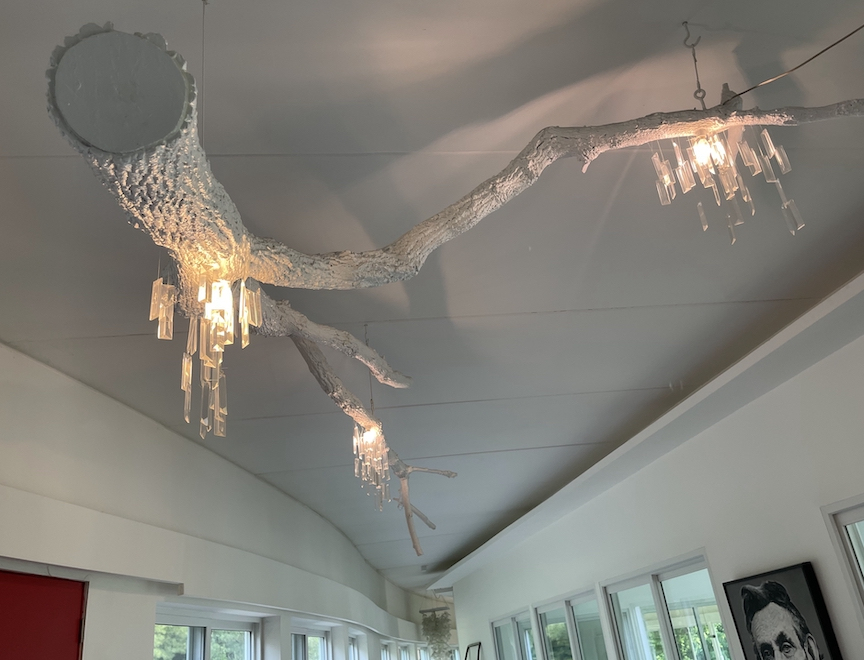
Bill Cope and Mary Kalantzis, Fallen Log Chandelier, 2009.
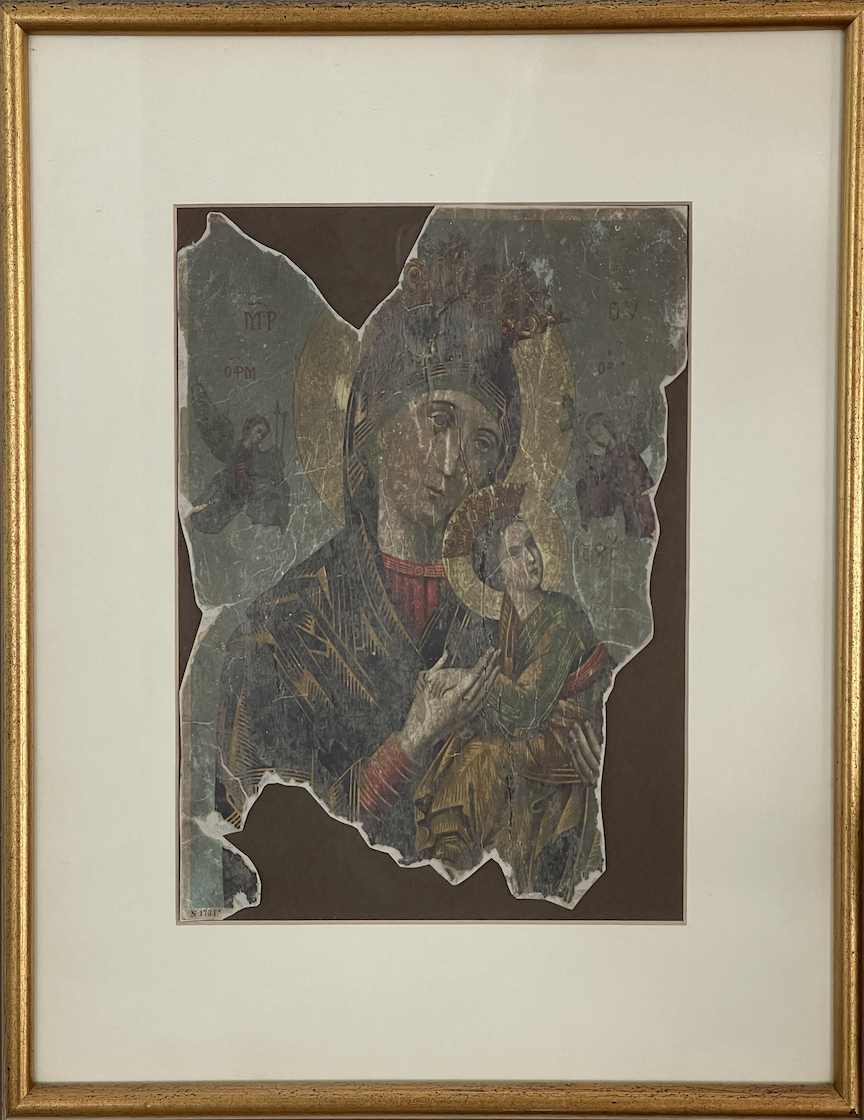
Unknown Artist, Mary with Child, c.1920s. When Mary's family left Greece for Australia in 1953, they left the house her great grandmother complete with furniture, farming implements, and wine and all barrels. They expected to be back soon, but they were not. When we went back to Greece for the first time in 1981, nearly everything had gone—except this icon, a lithographic print of no particular value, which we found in the icon box in the corner of the main downstairs room. We salvaged and framed what had not been eaten by mice and moths in the intervening decades.
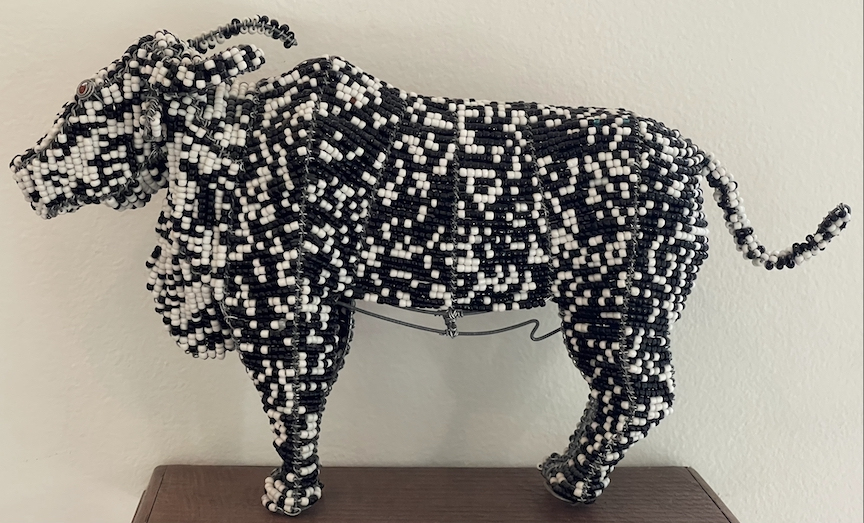
Unknown Artist, Beaded Cow, Soweto, South Africa, 2007.
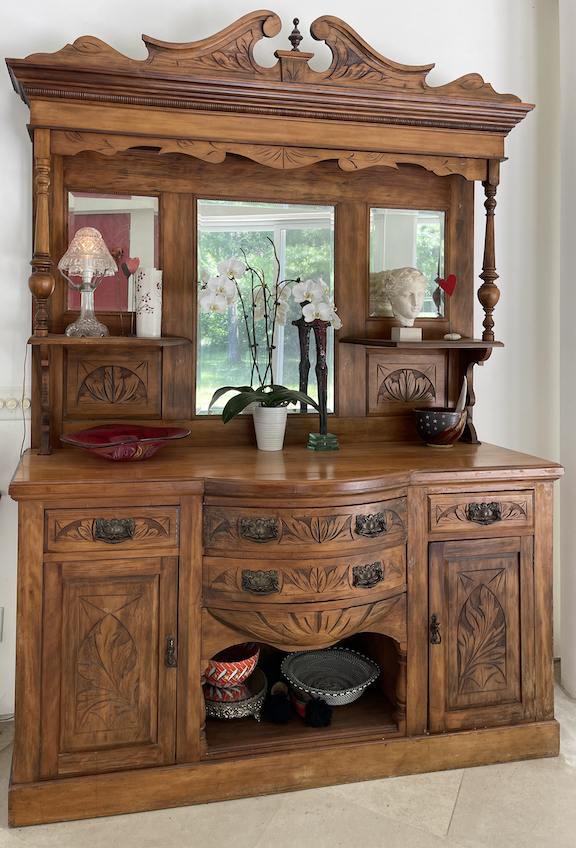
Sideboard, Rutherglen, Australia, c.1900. Roughly made by a local craftsman in Murray Valley pine, a native Australian timber. Birthday gift for Mary, 1987.
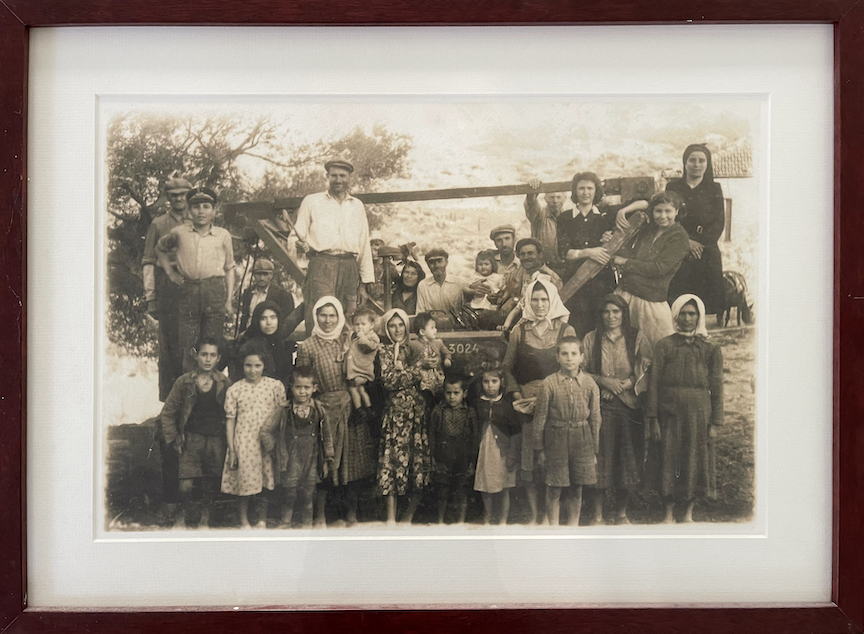
Unknown Photographer, The Day the Threshing Machine Came, 1952. This photo was taken on the aloni, the village common, on the day a threshing machine first came to Mary's village, Ambelos. Mary is the little girl being held by her father in the back row. Her mother is in the floral dress in the front row, holding Mary’s sister, Adriana. To the right of the picture, is the house we still have in the village, where Mary and Adriana were born. A mule grazes. Before the coming of the machine, the mules used to be harnessed on the aloni, to thresh the wheat with their hooves, walking around in circles until the grain was ready to be winnowed from the chaff. The machine in this picture brought an end to that. Mary’s father was the mayor of the village, and he had organized the building of a road to our house. Before that, there was only a narrow walking track which meant the threshing machine could now make it through.
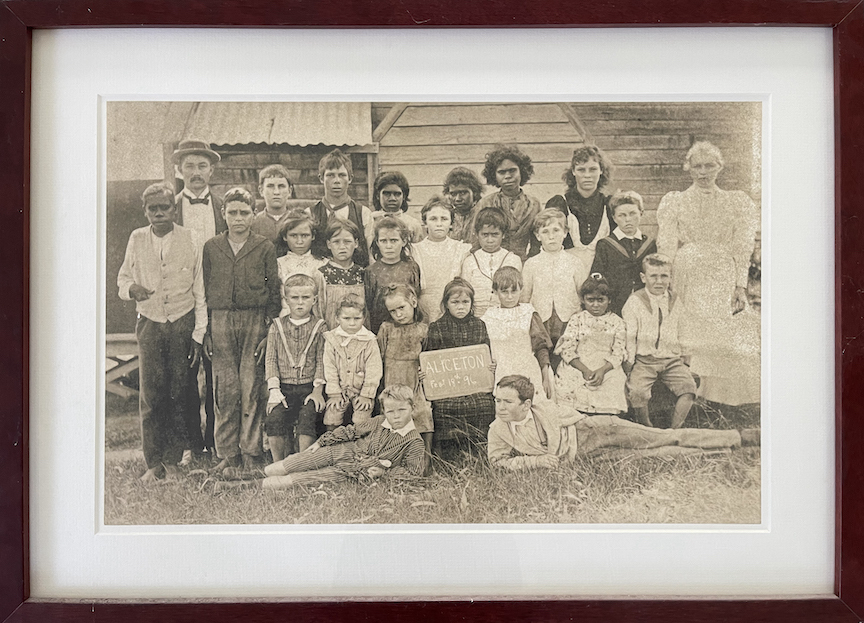
Unknown Photographer, School Photo, Aliceton NSW Australia, 1896. Bill's grandfather, Stanley John Muston, is the second from the left in the back row. Stanley’s father, Charles, ran the local sawmill at Aliceton (now Karuah, near Port Stephens, NSW), on the traditional lands of the Worimi people. The rough school building was made with timber from the mill. Here, black and white stand together, including that striking Aboriginal boy on the left of the picture, hand proudly in his waistcoat pocket, but with no shoes. Within a decade, White Australia had enforced strict segregation and the school had been forced to close.
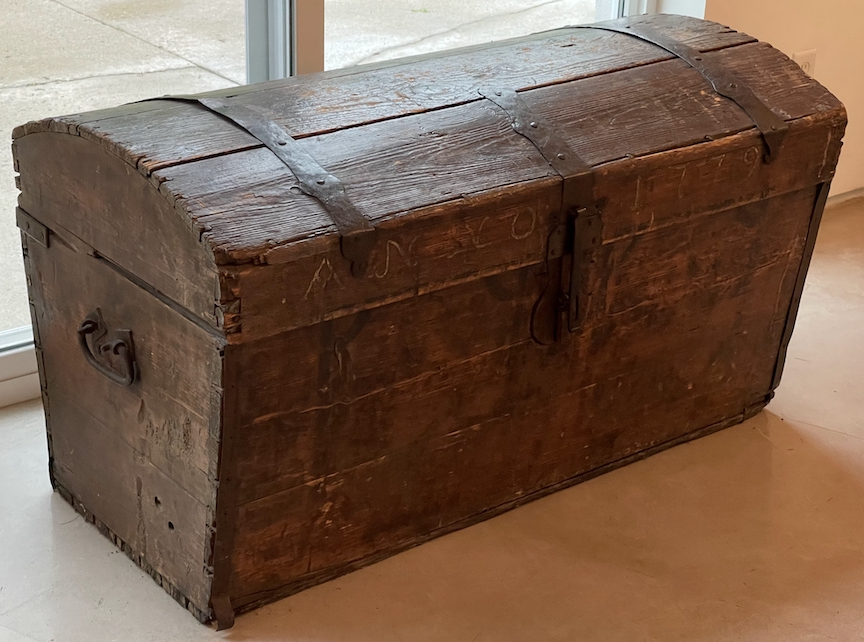
Chest, Anno 1779, or so it says, and judging by the handmade nails and ironwork, were are inclined to believe it. Purchased 2010.
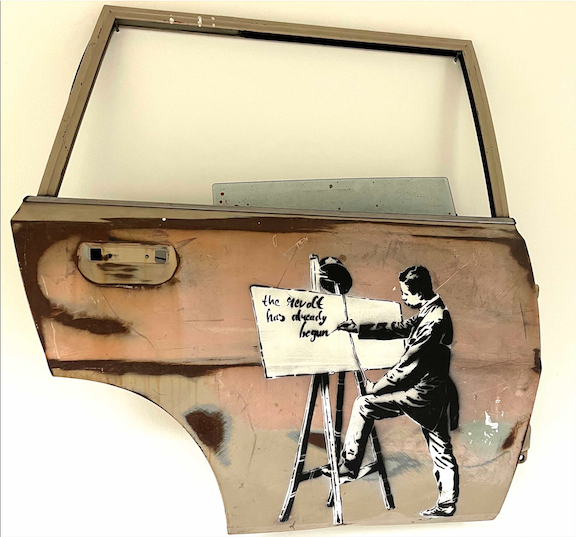
Anonymous Stencil Artist, The Revolt Has Already Begun, Melbourne, 2005.
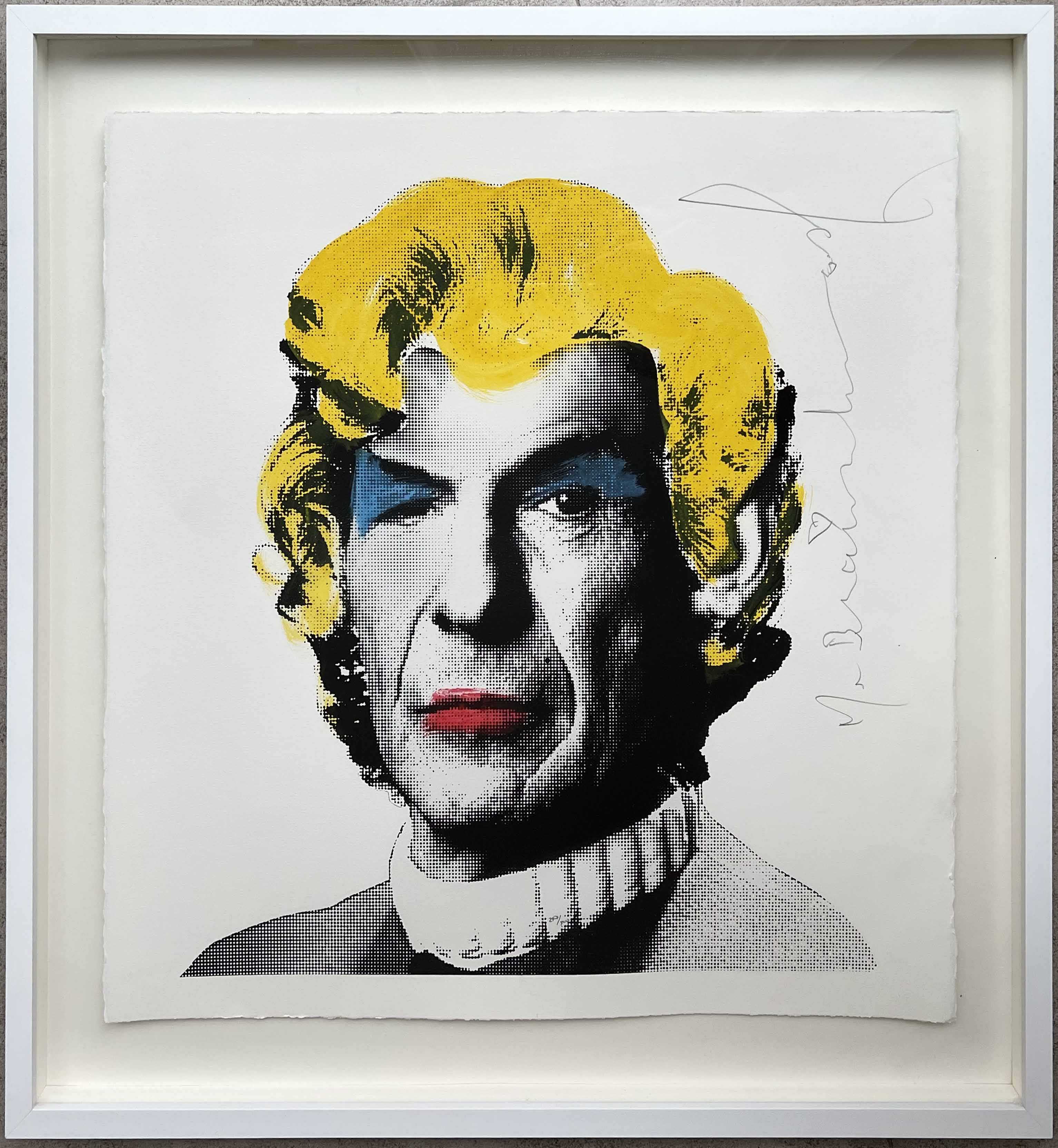
Mr Brainwash (Thierry Guetta, 1966-). Spock, 2004. Banksy directed the 2010 documentary about Mr Brainwash, Exit Through the Gift Store. Gift of the artist to Sophia Kalantzis-Cope, 2004.

Edward J. Janeski, Rendering, College of Education, University of Illinois, A. Richard Williams, Architect, 1961.
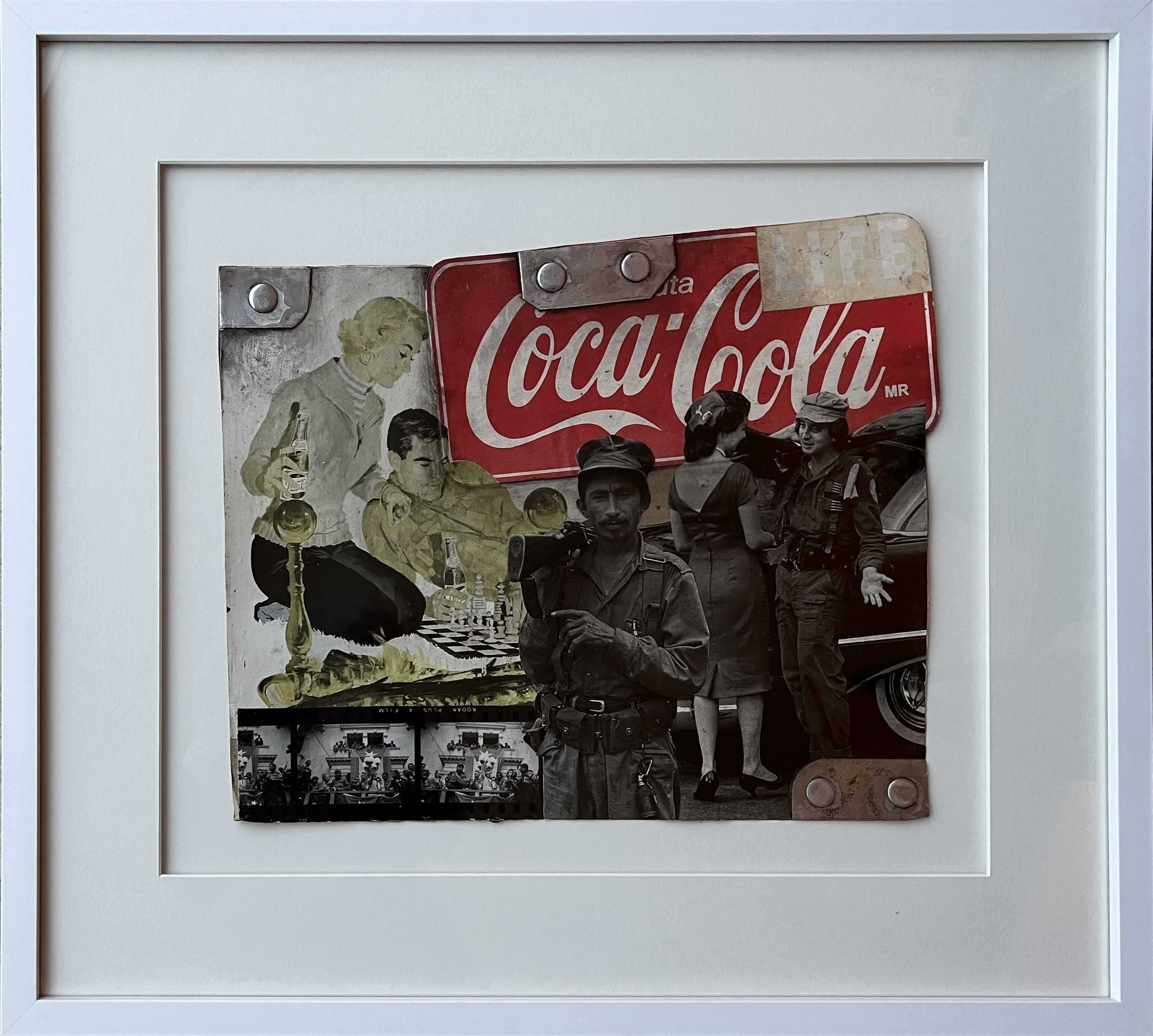
Anonymous Artist, Post-revolutionary Collage, purchased in a market in Havana, Cuba, 2004.
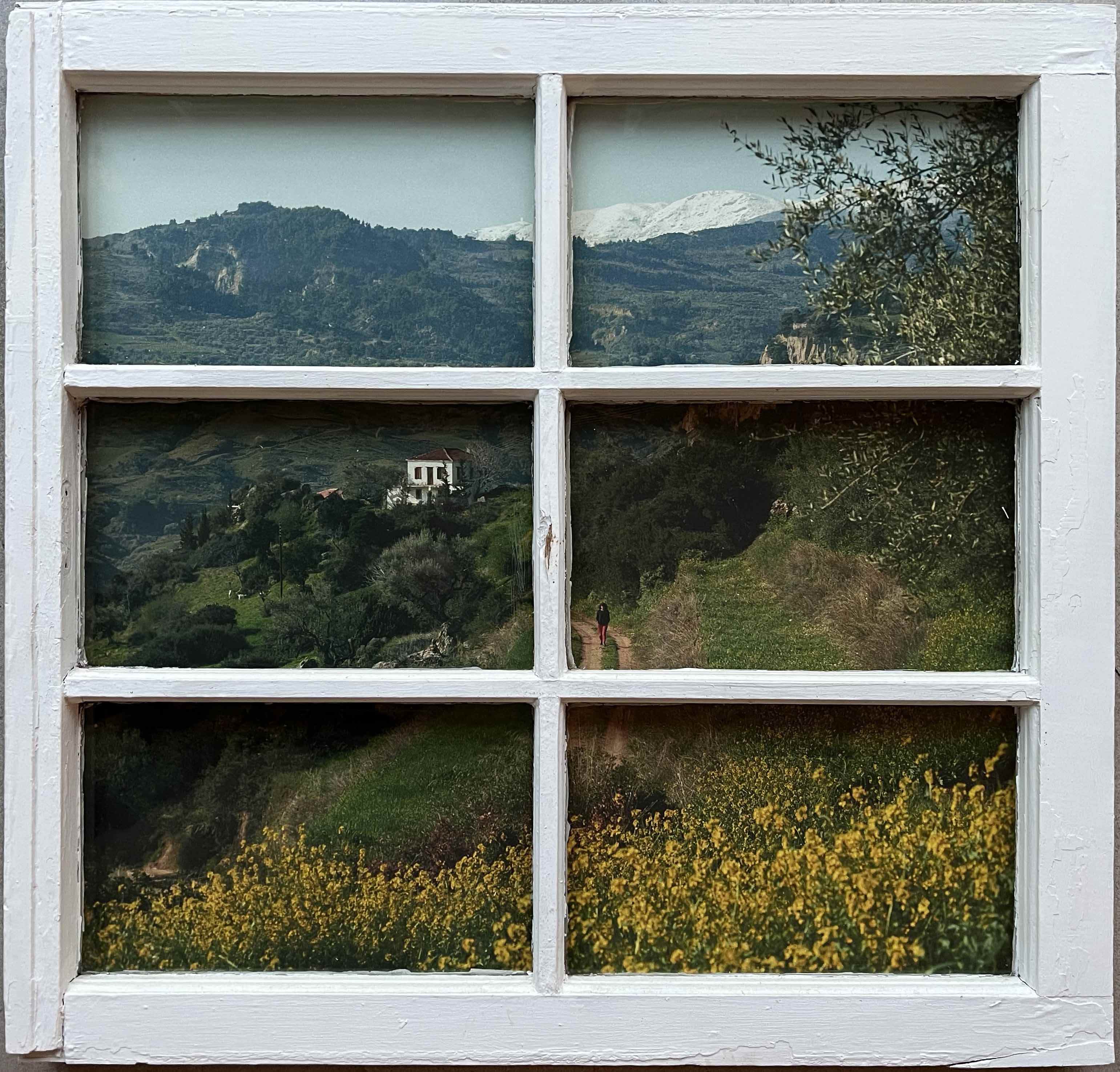
Bill Cope, Mary walks down the road her father built to the house in which she was born, Ambelos, Greece, March 1985.
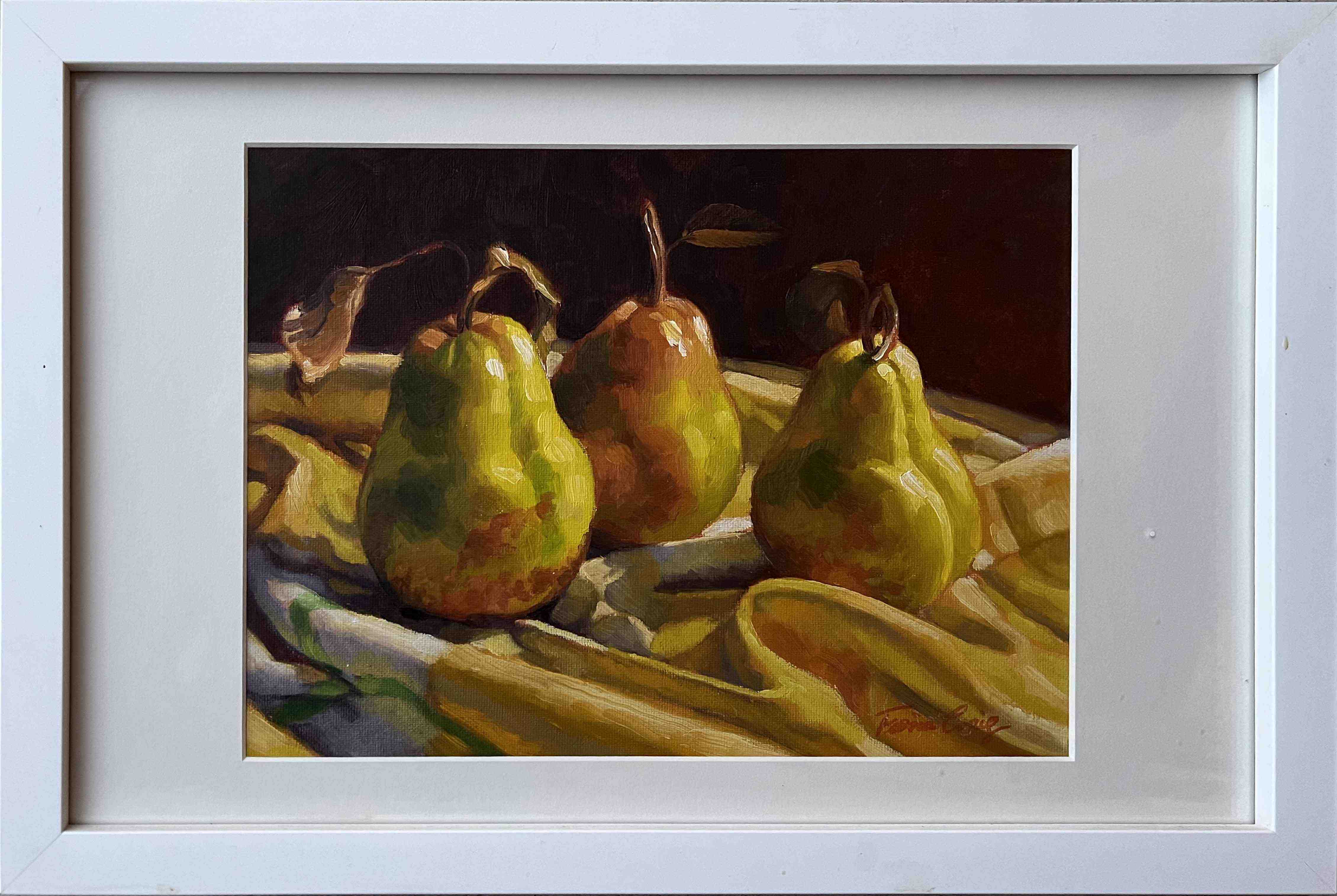
Fiona Craig, Still Life, 2017.

Anneke Silver, Recollection, 1993.
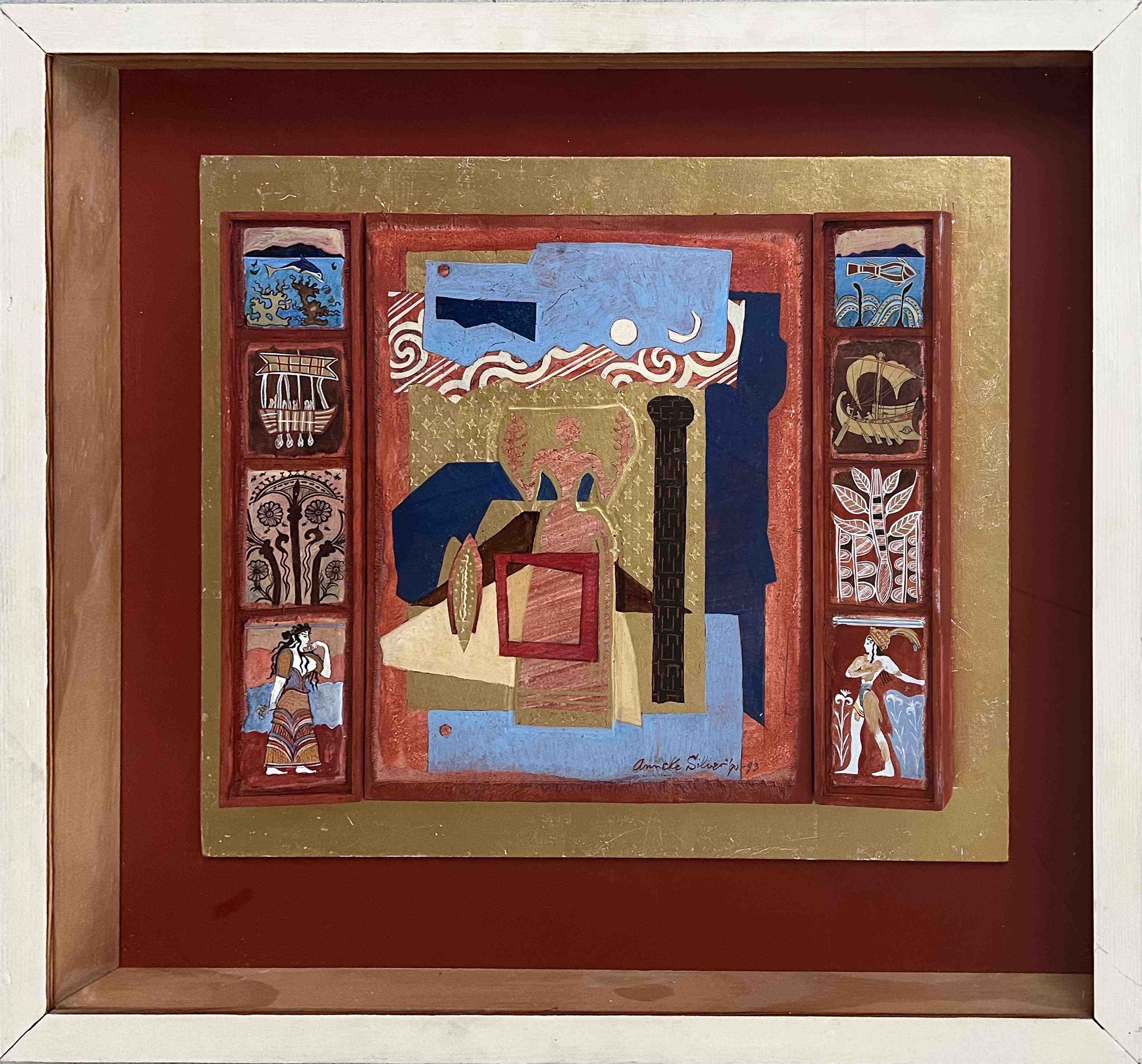
Anneke Silver, Memories of the Aegean, 1990. Purchased in Townsville, Australia 1994.
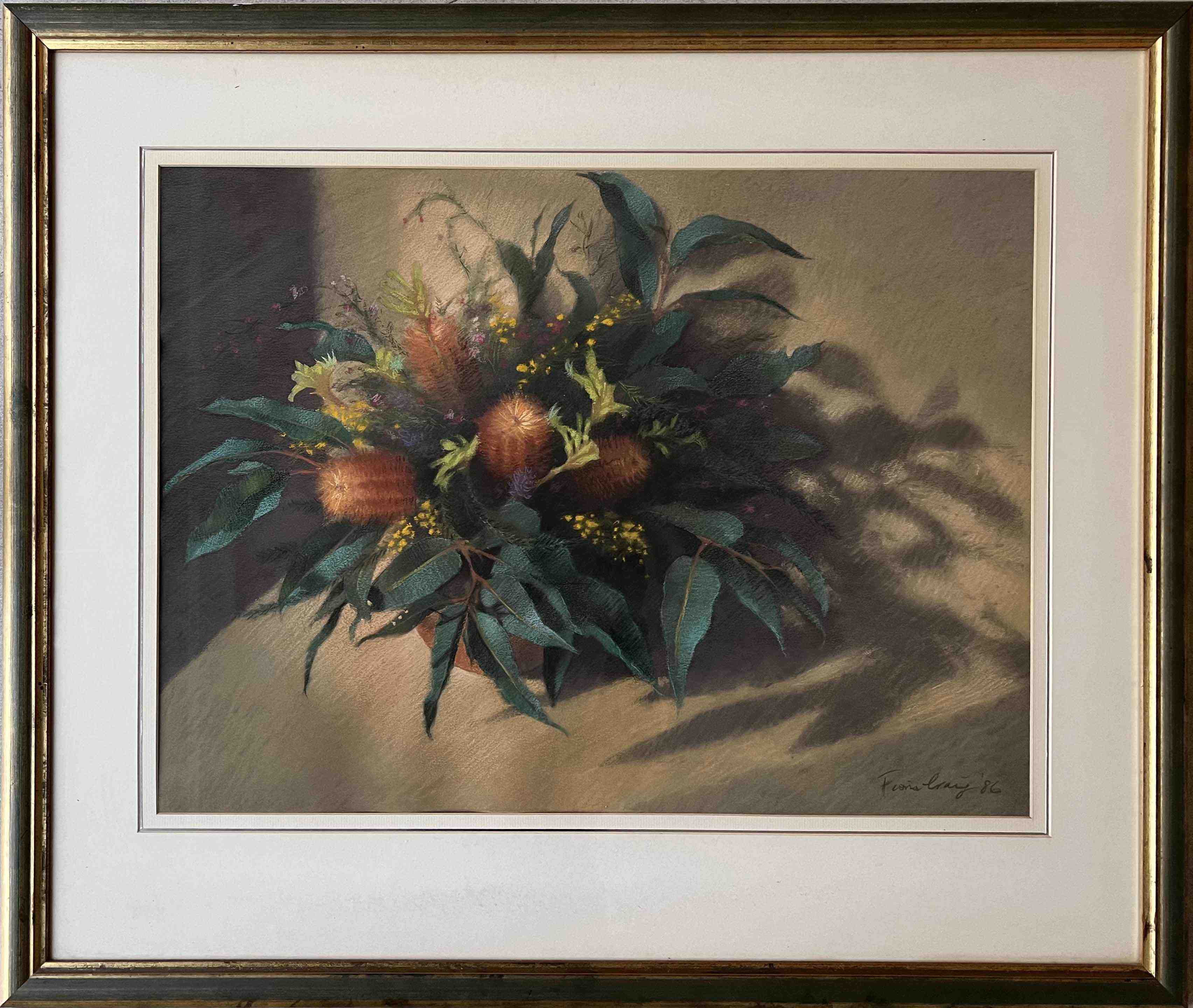
Fiona Craig, Orange Banksia and Gumleaves in Soft Morning Light, watercolour and pastel, 1983.
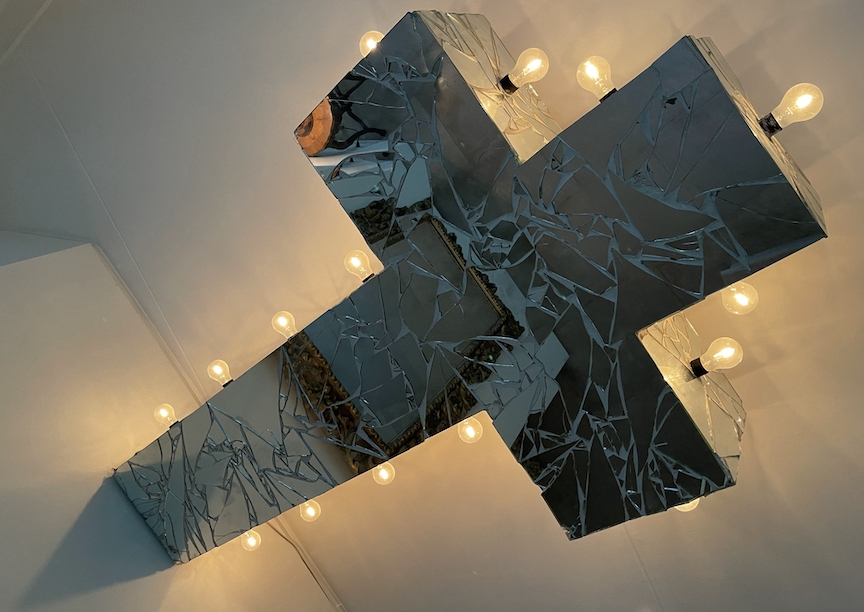
Phillip Kalantzis-Cope, Untitled, 1999.
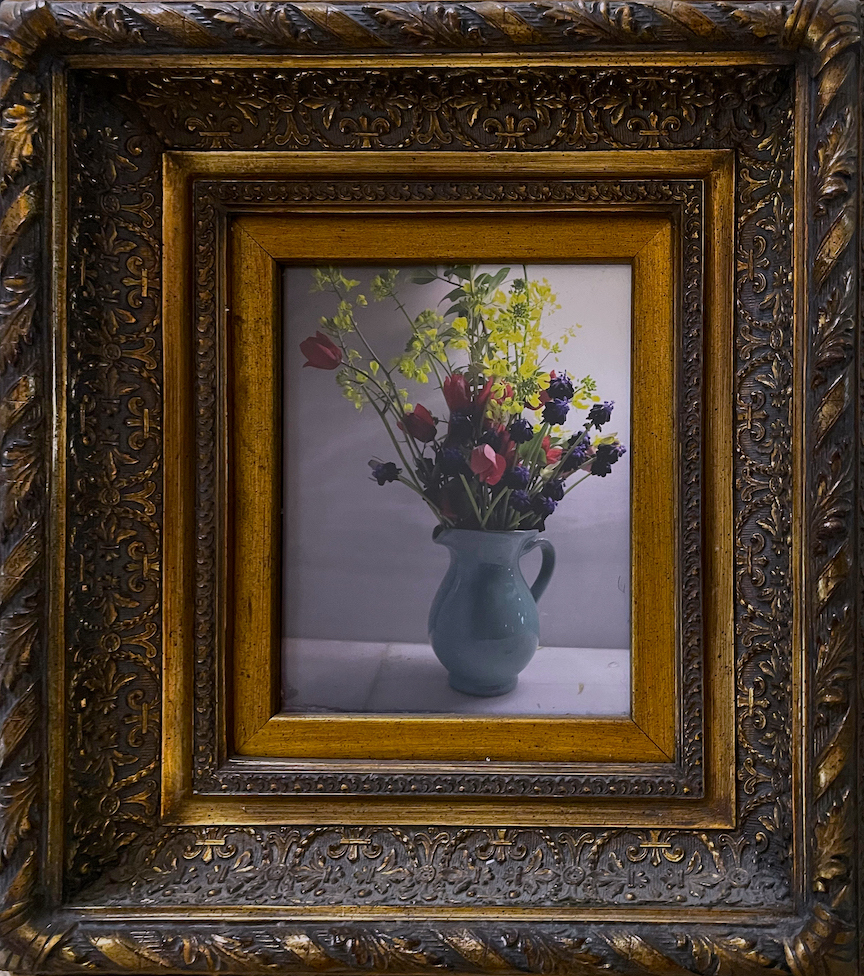
Bill Cope, Ambelos Village Wildflowers, 2004.
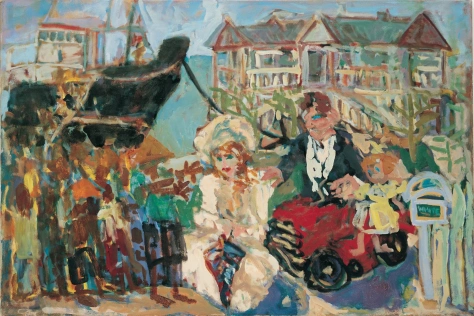
Leslie Morgan, (1955-2017), Queenslanders, 1999. Les worked with us in Melbourne on our Learning by Design project. Artist statement: "The painting ‘Queenslanders’ depicts a white settler family, in a pose resembling a studio photograph from the turn of the last century. The man sits astride his mower (the ride-on looks out of place) with his wife and child, and behind the white picket fence is a beautiful
Queenslander home. The painting’s subject and idea was appropriated from the eighteenth century British painter, Thomas Gainsborough, specifically his painting ‘Mr and Mrs Andrews’ (1750); a painting that deliberately exudes wealth, ownership and control of property. The title ‘Queenslanders’ is itself a loaded signifier since I am referring to the white family but also to the newcomers as new Queenslanders, and yet the two groups are represented differently. Although they are positioned adjacent to one another, their relationship is antagonistic. The idyllic family portrait is disrupted by the presence of a large boat from which Asians are seen disembarking. The painting started asa group portrait of white Queenslanders and the boat was added as a response to Australia’s concern over the perceived influx of asylum seekers that were labelled ‘illegals’ in the racialised language of the political right. The inclusion of the boat was not simply an intellectual response to humanitarian issues, but was considered necessary as a pictorial device to threaten the stability of the family group. Accordingly, ‘Queenslanders’, in this sense, is metaphorical of old Australia being challenged by new Australia. Asians were viewed by Hansonites as one homogenous group, and, as such brought disunity and division by swamping Australia. The group of ‘boat people’ are represented as Hanson would view Asians: literally faceless. In ‘Queenslanders’, the so-called illegals have their arms outstretched as if appealing for help, but they are ignored by the white family intent on posing for their picture, on their land. In this sense, my painting can be read as a critique of the Australian government’s policy concerning the processing of asylum seekers. However ‘Queenslanders’ also speaks to the racism and exclusion of the foreigner as ‘other’, but more specifically to fears of an invasion of Australia from the north. For the family depicted in ‘Queenslanders’, their home must be defended from the alien invasion."
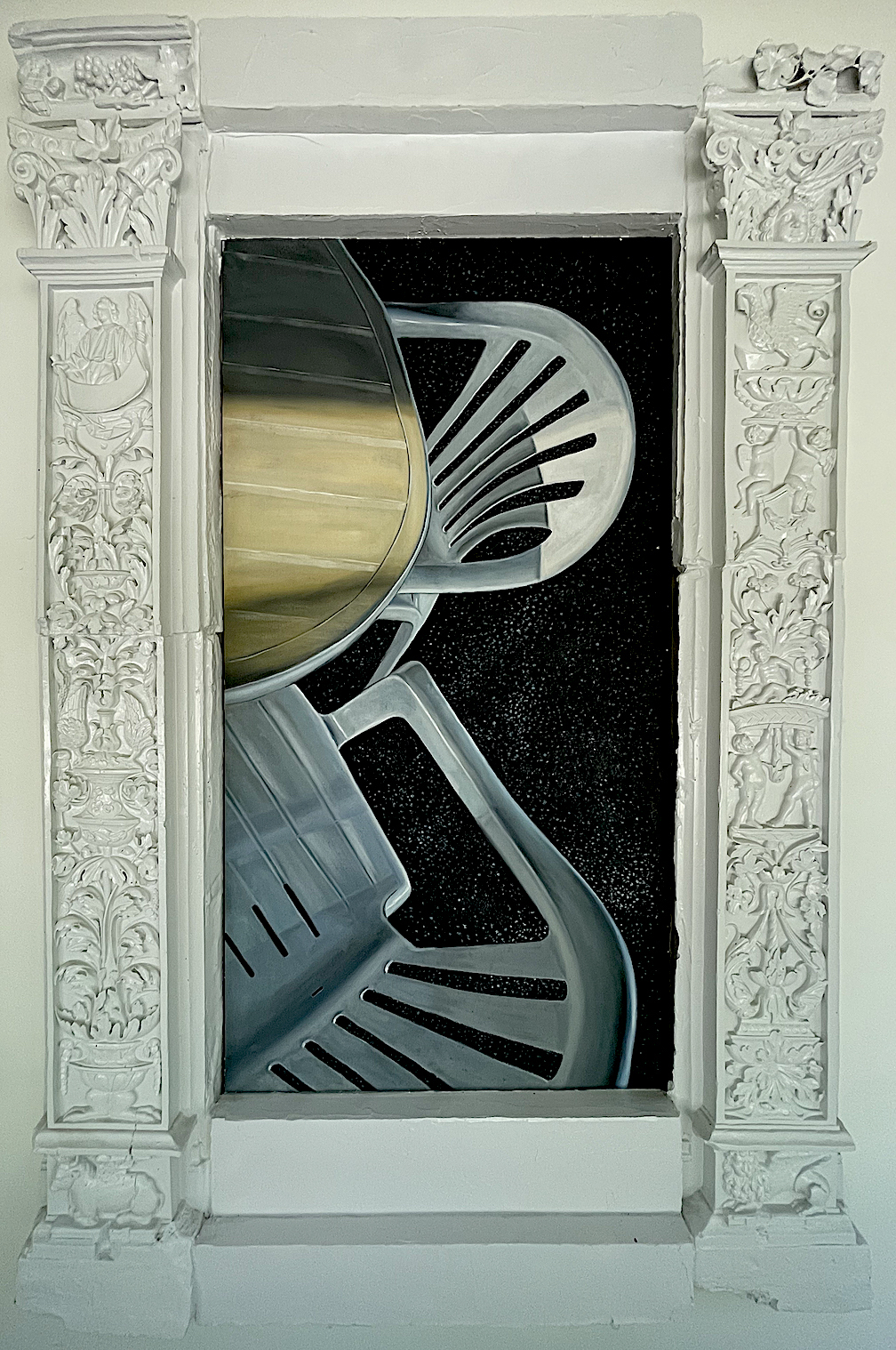
Bill Cope and Mary Kalantzis, Gypsy China Chairs, 2010. This is an oil painting of a photo taken in Greece by Cope and repainted by a Chinese artist whose regular job is to make copies of Leonardos, Monets and van Goghs. These plastic chairs are everywhere in Greece, so much so that they have become a modern symbol of the country. They are sold by Roma (gypsies) from the backs of trucks. The image frame is made of some old plaster moldings found in a junk store in Champaign. This is a multimodal, transcultural story that speaks to the work we have done in their research on Roma education in Greece. For a longer version of the story of this work, visit our New Learning community in CGScholar.

Bill Cope, Footnote to Gypsy China Chairs, photograph, 2009.

Phillip Kalantzis-Cope, Middlescapes, 2015-2021.
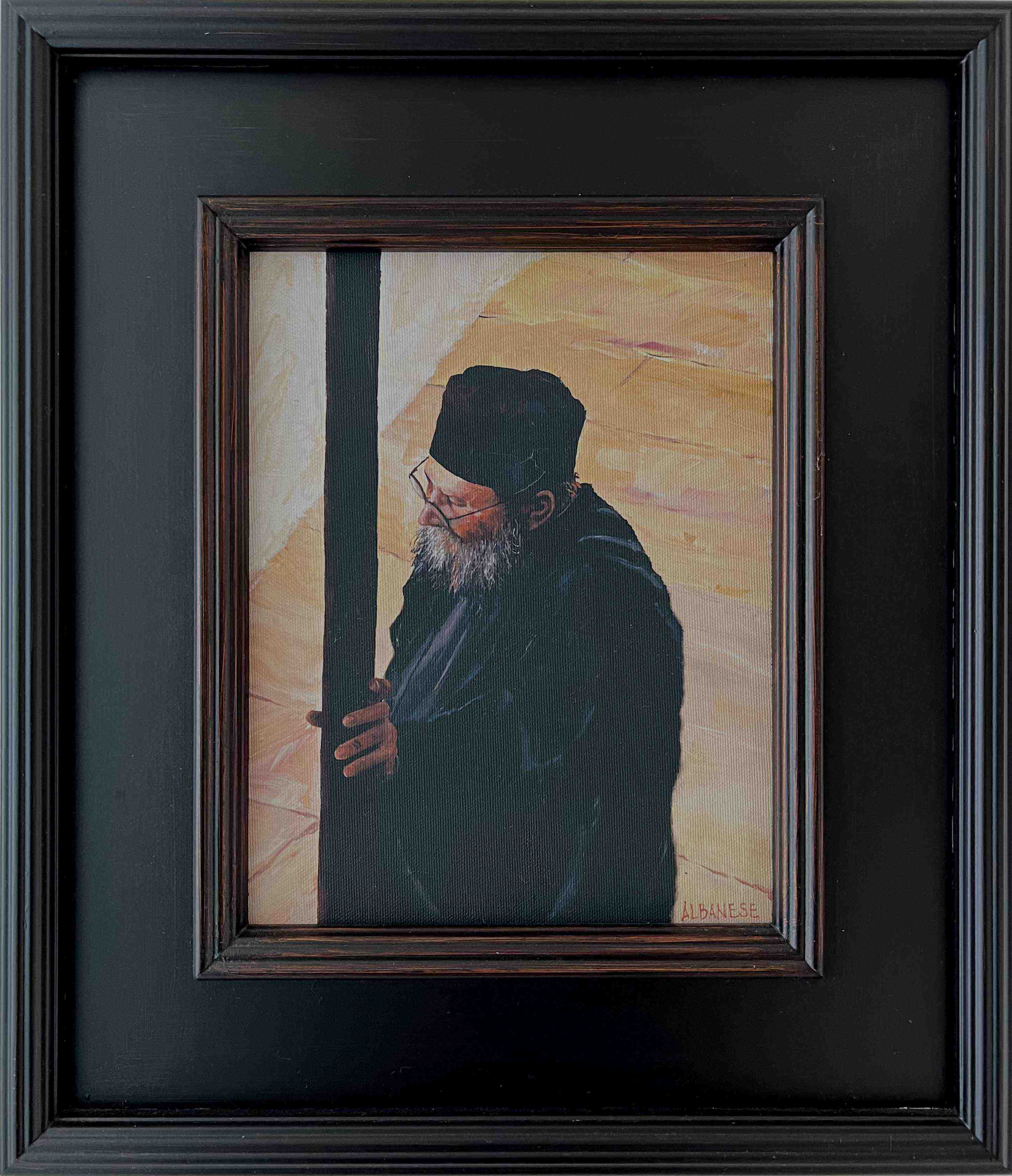
Chuck Albanese, Papa, Greek Priest, 2010. Albanese was a student of A. Richard Williams at the University of Illinois, later Dean of the College of Architecture, University of Arizona.
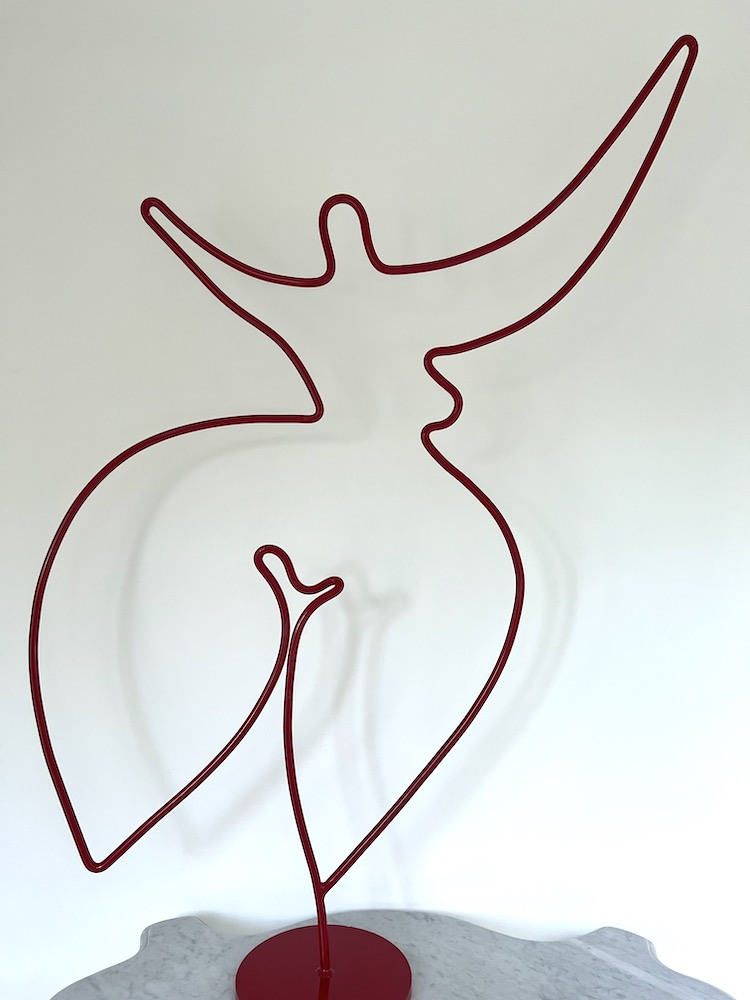
Steve Martin, Red Joy, 2011. Purchased in New Orleans, 2011.
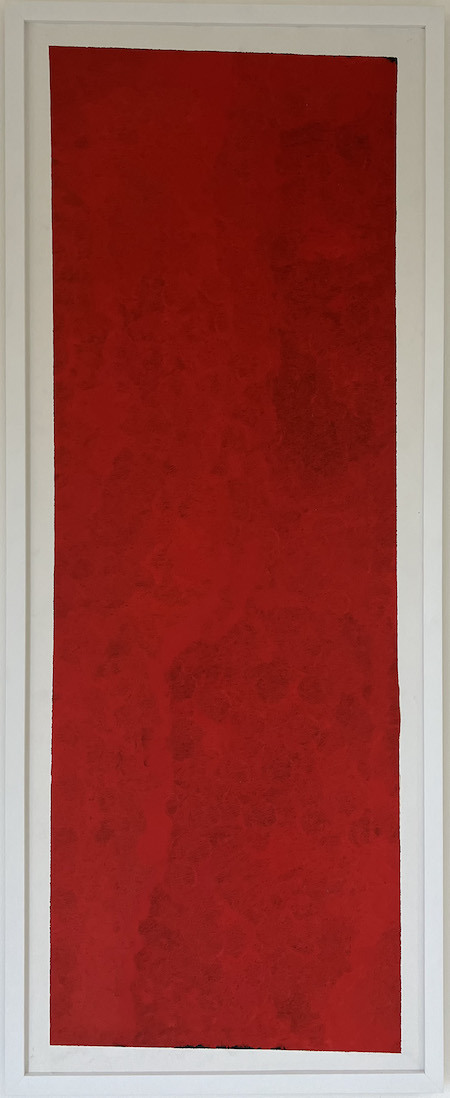
Lanita Numina (1979- ), Wild Flower, 2013. An artist from Utopia, Anmatjerre language. Purchased in Darwin, 2013.
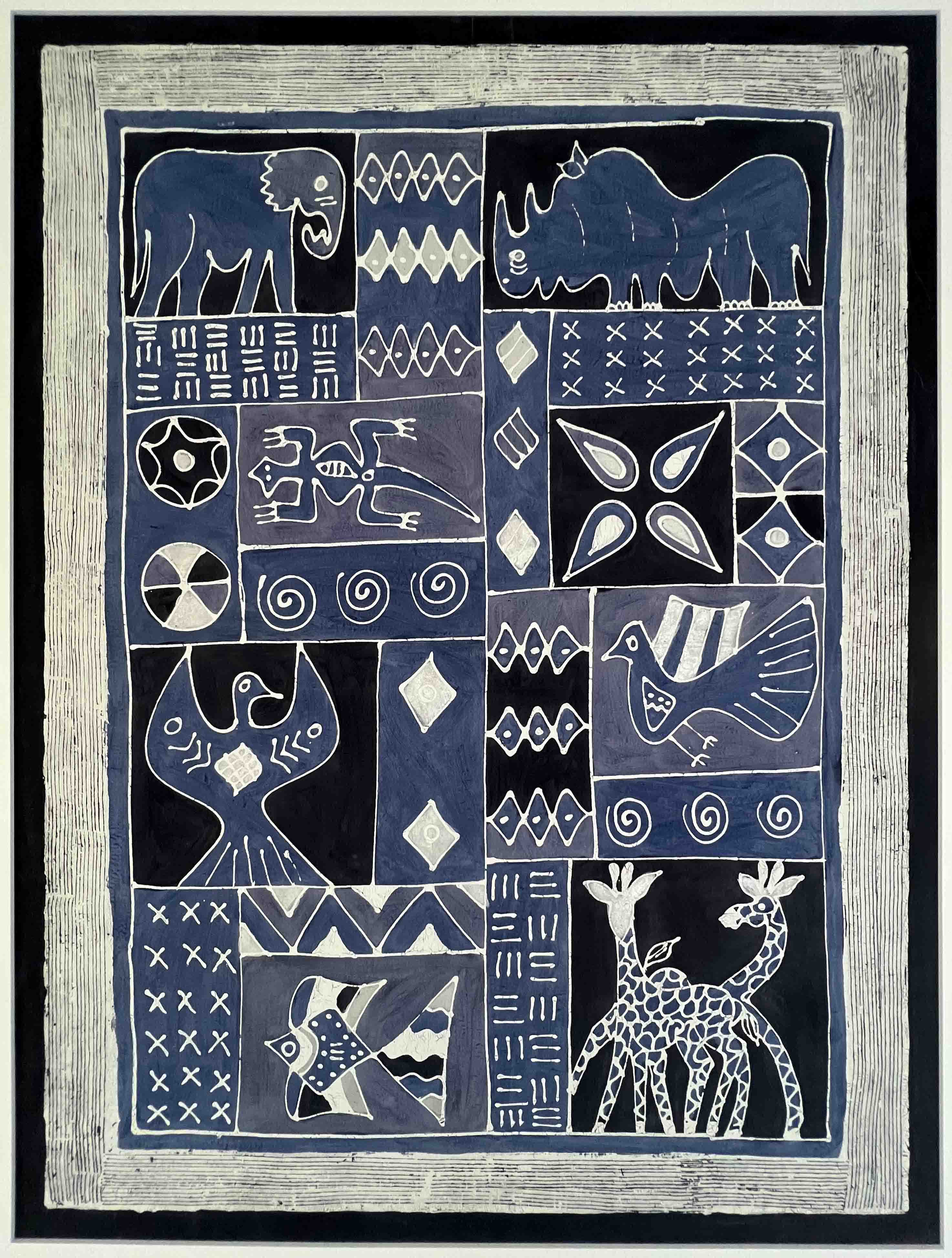
Anonymous Artist, purchased in Johannesburg, 2007.
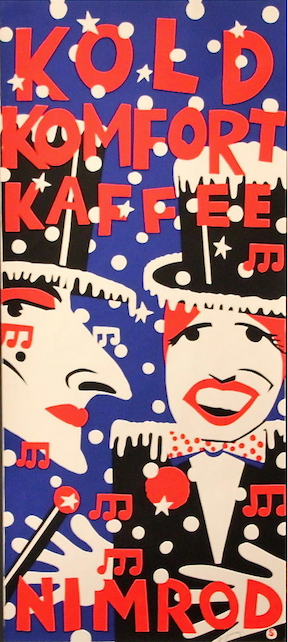
Martin Sharp (1940-2013), Kold Komfort Kaffee, Poster for the Nimrod Theatre, Robyn Archer and John Bell, Sydney, 1978. Reprinted by Redback posters, 1982.
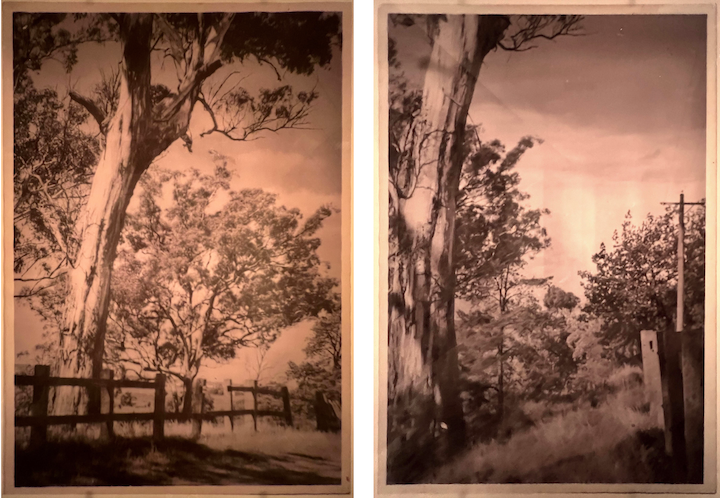
Anonymous Photographer. Bill Cope found two tiny black and white snapshots on box of photos his father had. Hugely enlarged, they are painting like, evocative of the Australian bush.

Kathleen Waterloo, Possibility, 2018.

Anonymous Artist, Untitled. Purchased at a street stall in Havana, Cuba, 2004.
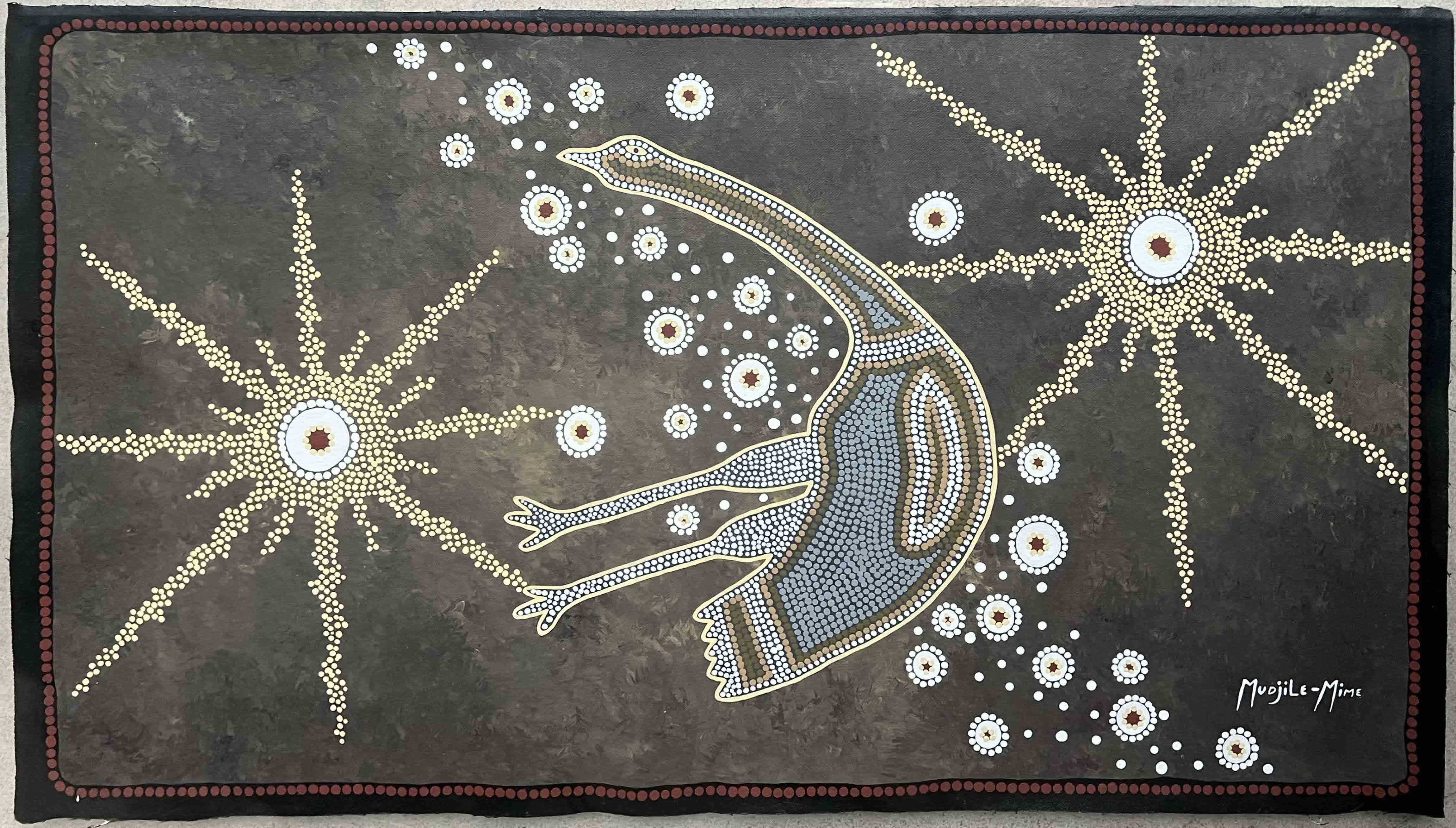
Mudjile-Mime, Star-Crossed Lovers, 1995, gift of relative of a prisoner in Townsville Jail, Australia.
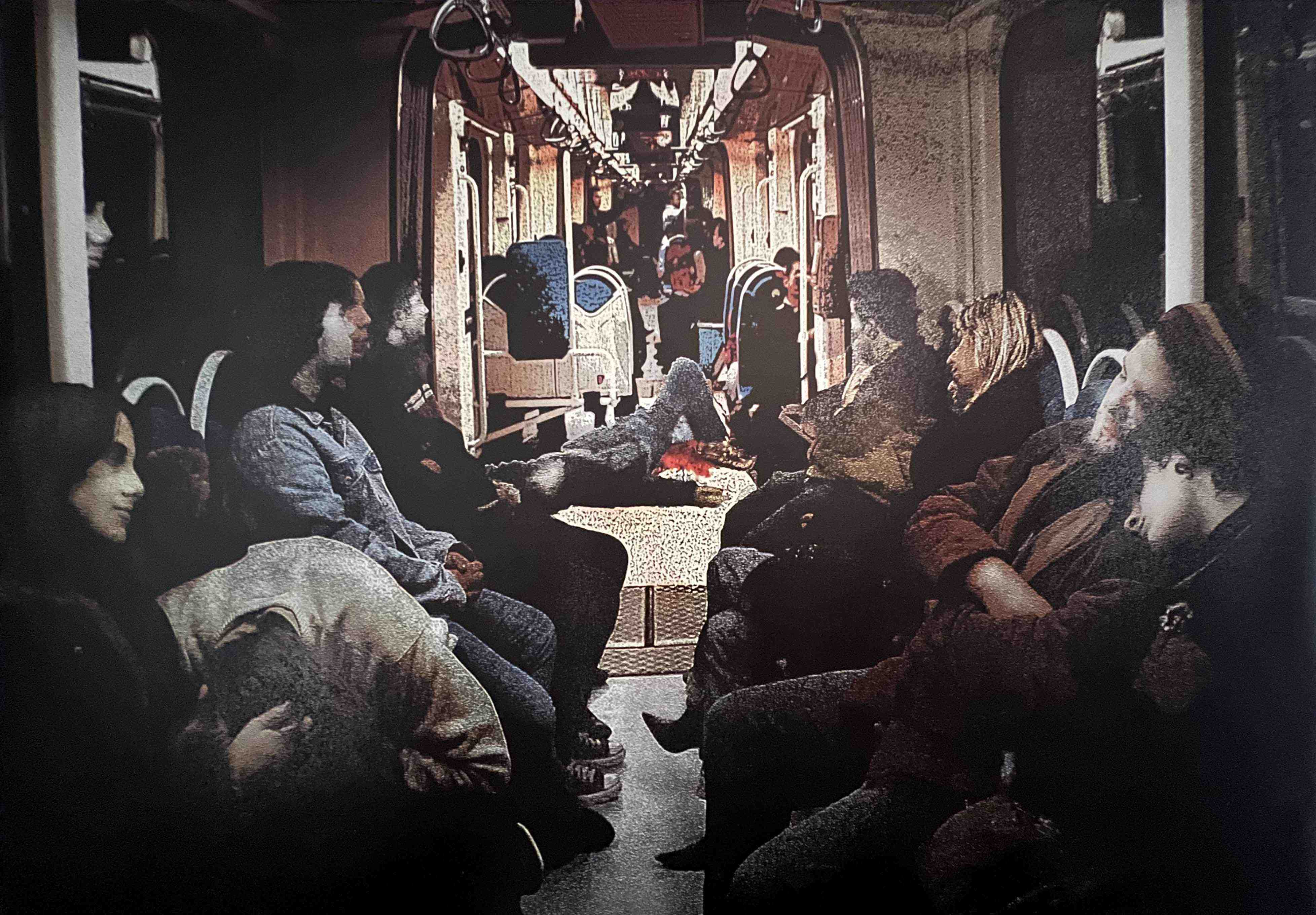
Pandelis Lazaridis, Negotiating the Ephemeral, exhibition at the Benaki Museum, Athens, Greece, 2006.
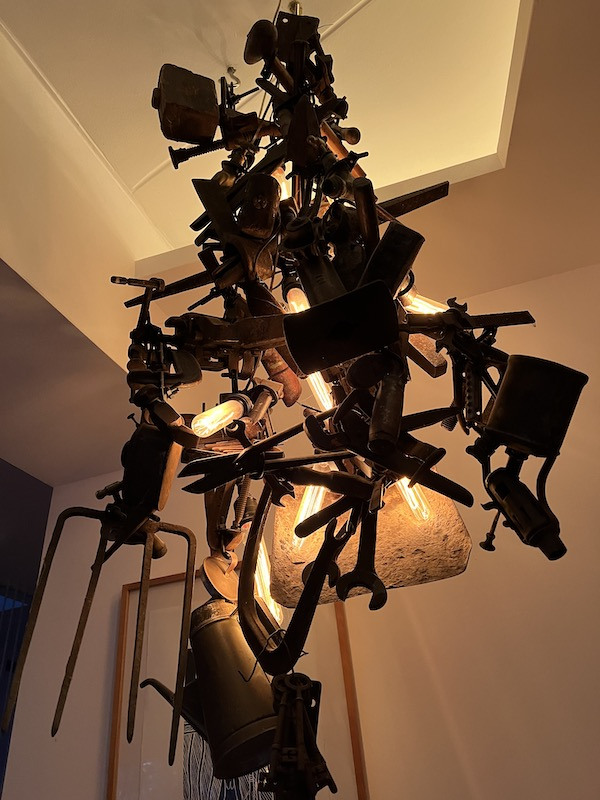
Bill Cope, Chandelier Made from Grandather's tools—William Henry Cope, 2010.
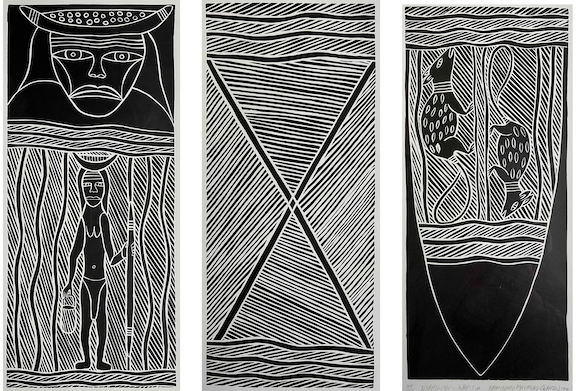
Naminapu Maymuru-White (1952–), Nyapilingu Wapitja (Self portrait, digging stick), 1989, purchased at Yirrkala, Northern Territory, 1993.
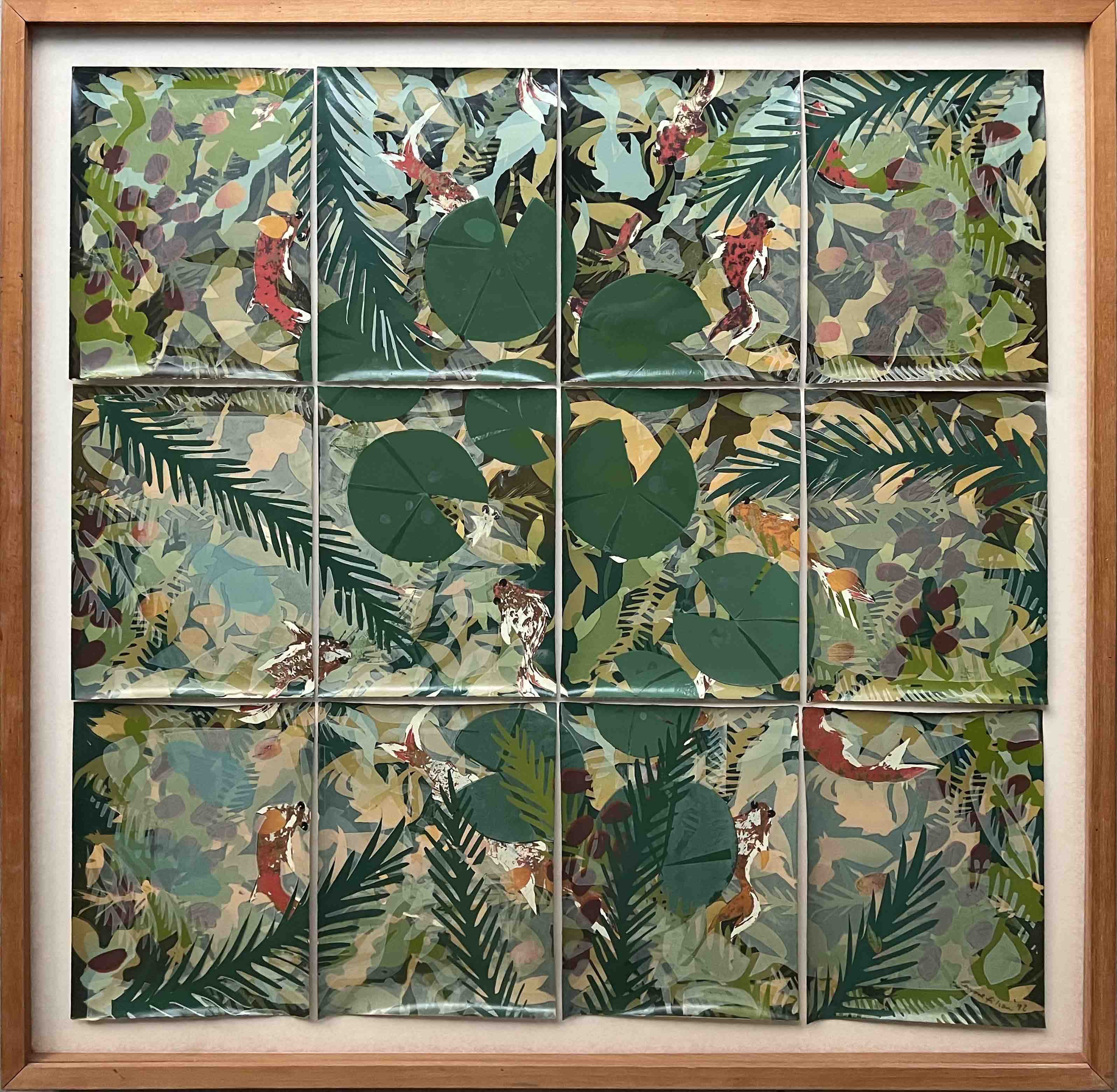
Lenore Filson (Bassan), (1953- ), Fishpond, 1986. Lenore worked as artist for the Social Literacy Project in Sydney.
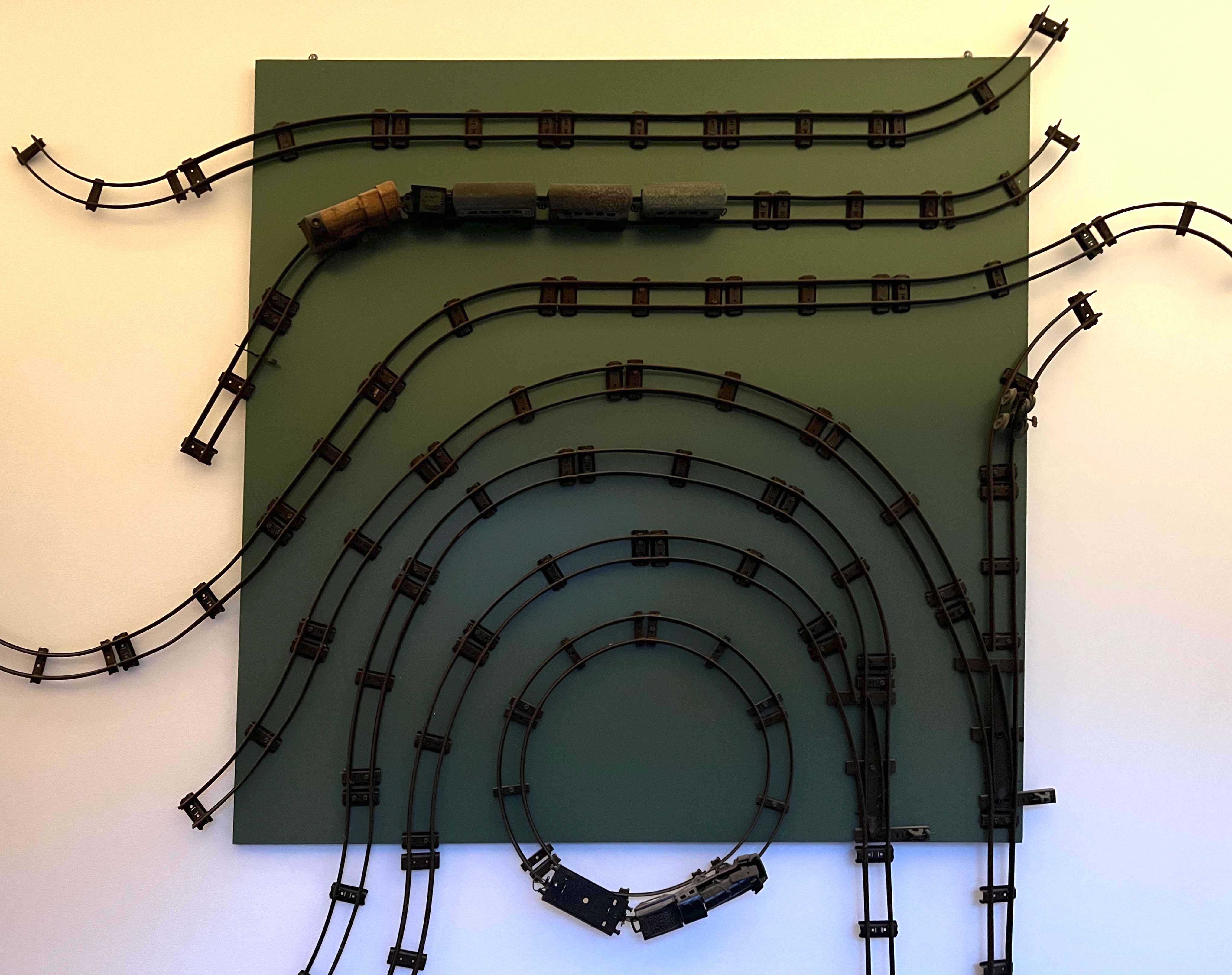
Bill's Trains, from Miss Fitzgerald's Store, c.1962.
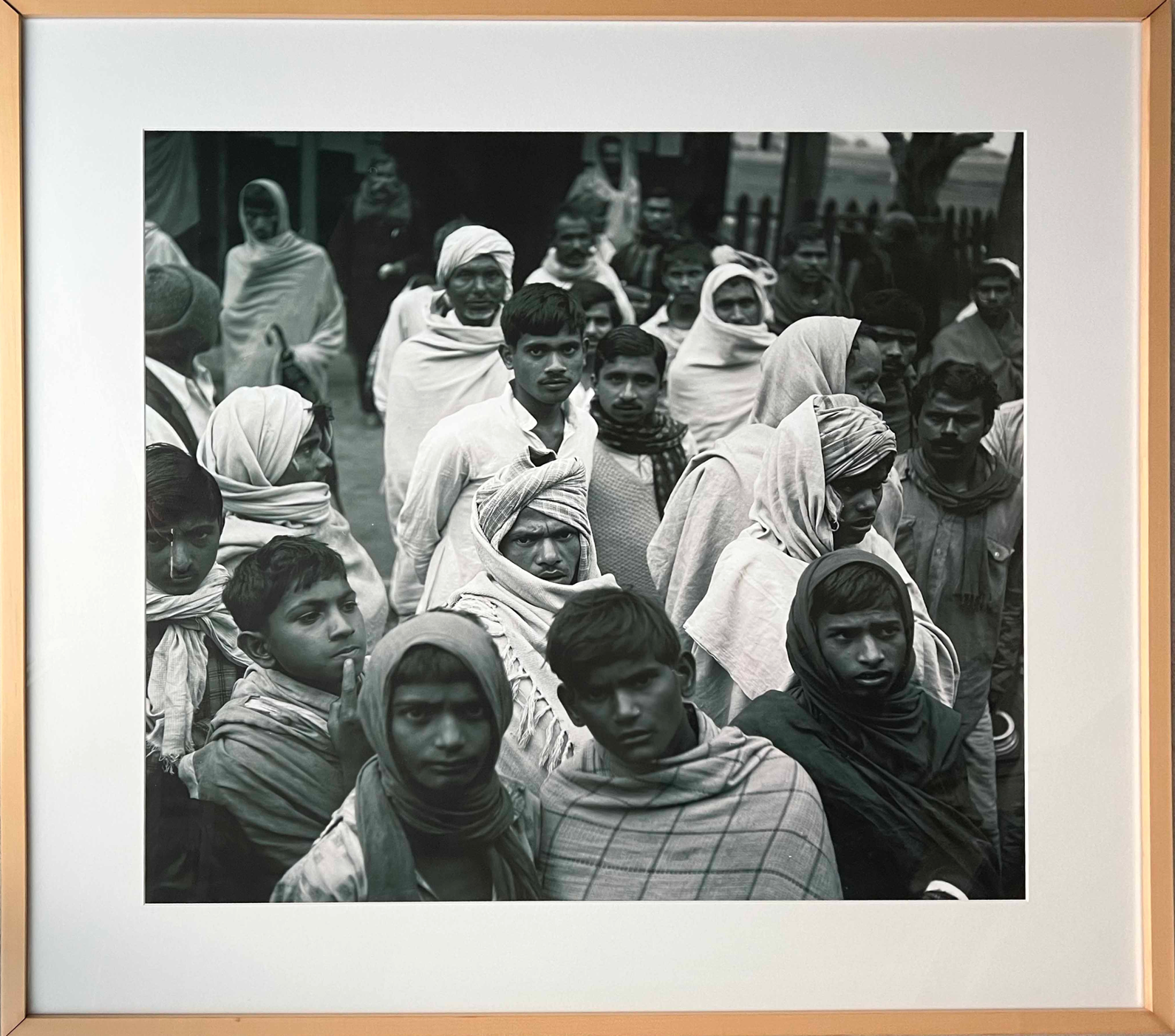
Bill Cope, The Face of India, 1977. Taken from a train window, traveling on the Arrah-Sasaram Light Railway, Bihar, January 1977.
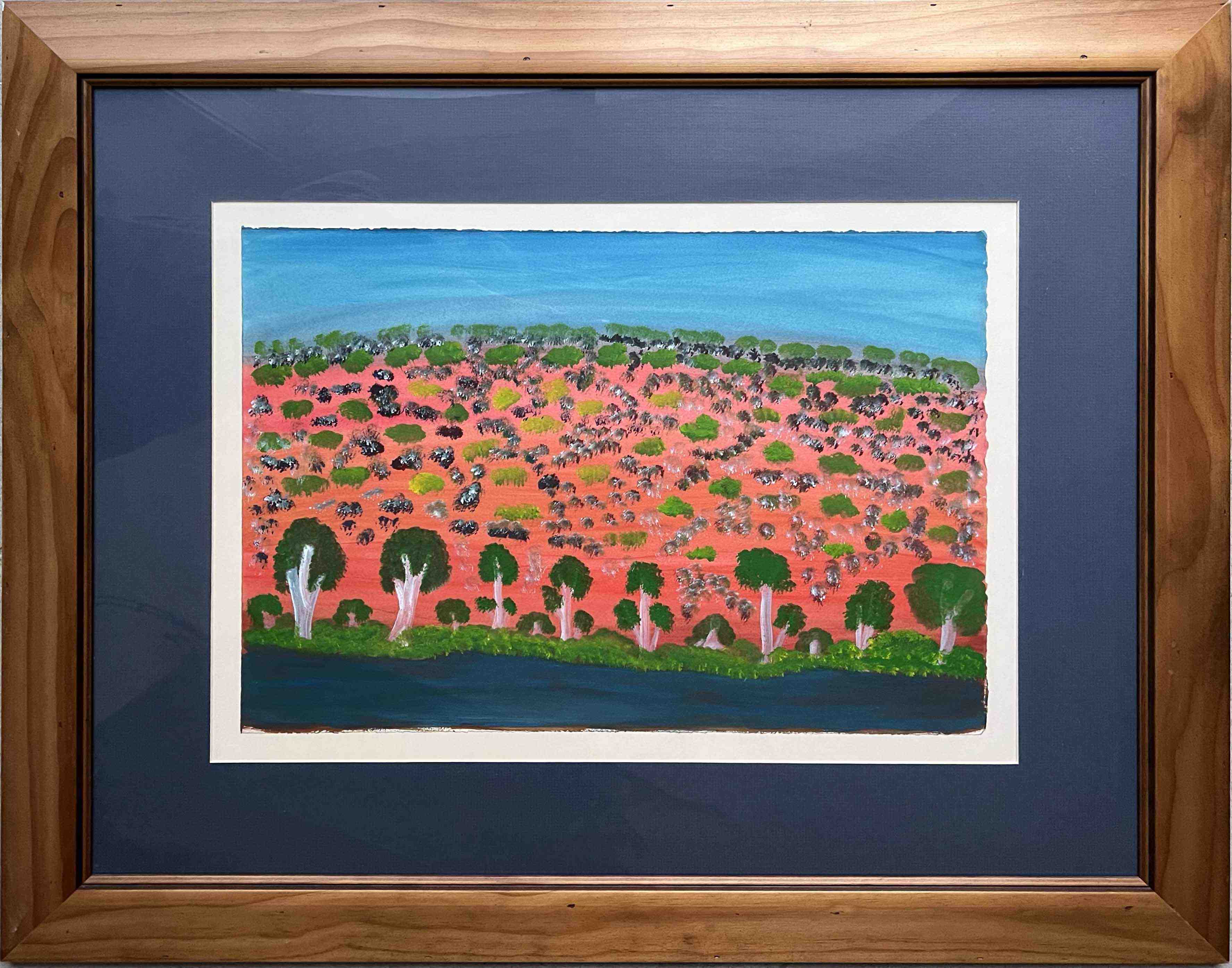
Munmarria Daisy Andrews (1934-2015), Walmajarri people North West Australia. Desert Landscape. Purchased Fitzroy Crossing, 1993.
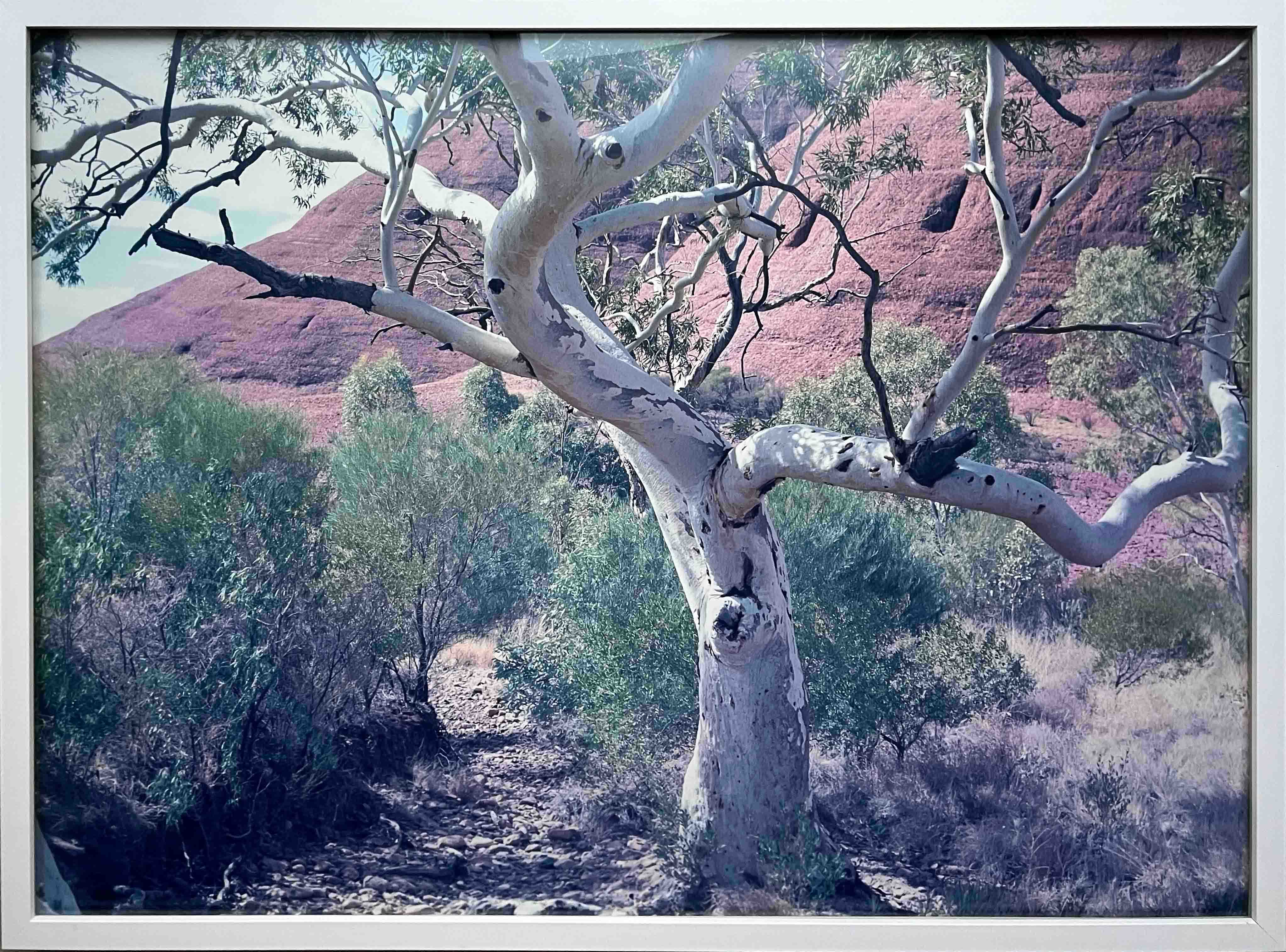
Bill Cope. Kata Tjuta, Central Australia, 1993.
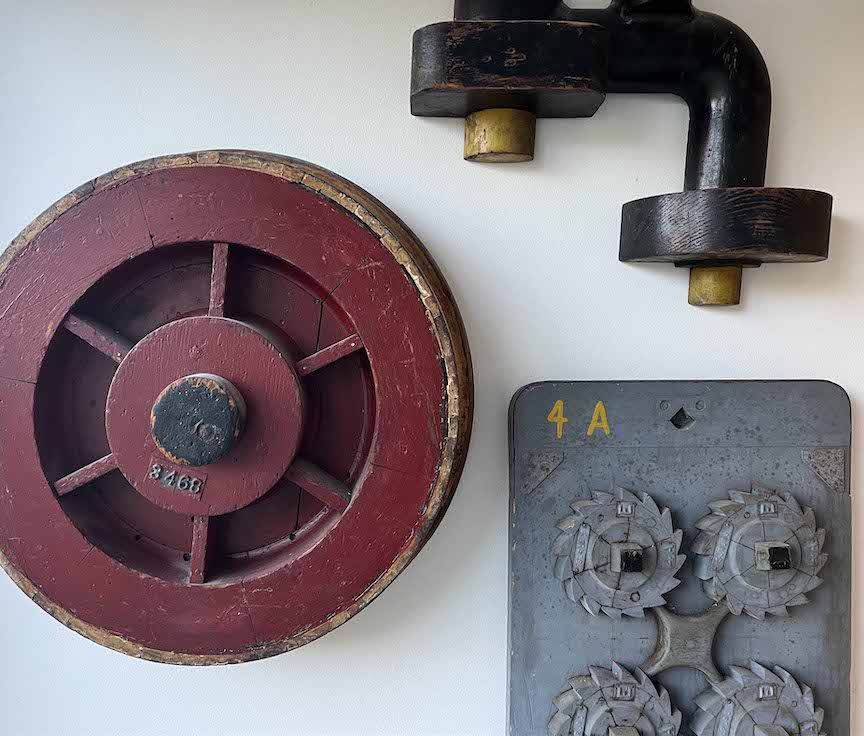
Molds from the foundry of the Eveleigh Railway Workshops, Sydney, Australia. Purchased c.1984.
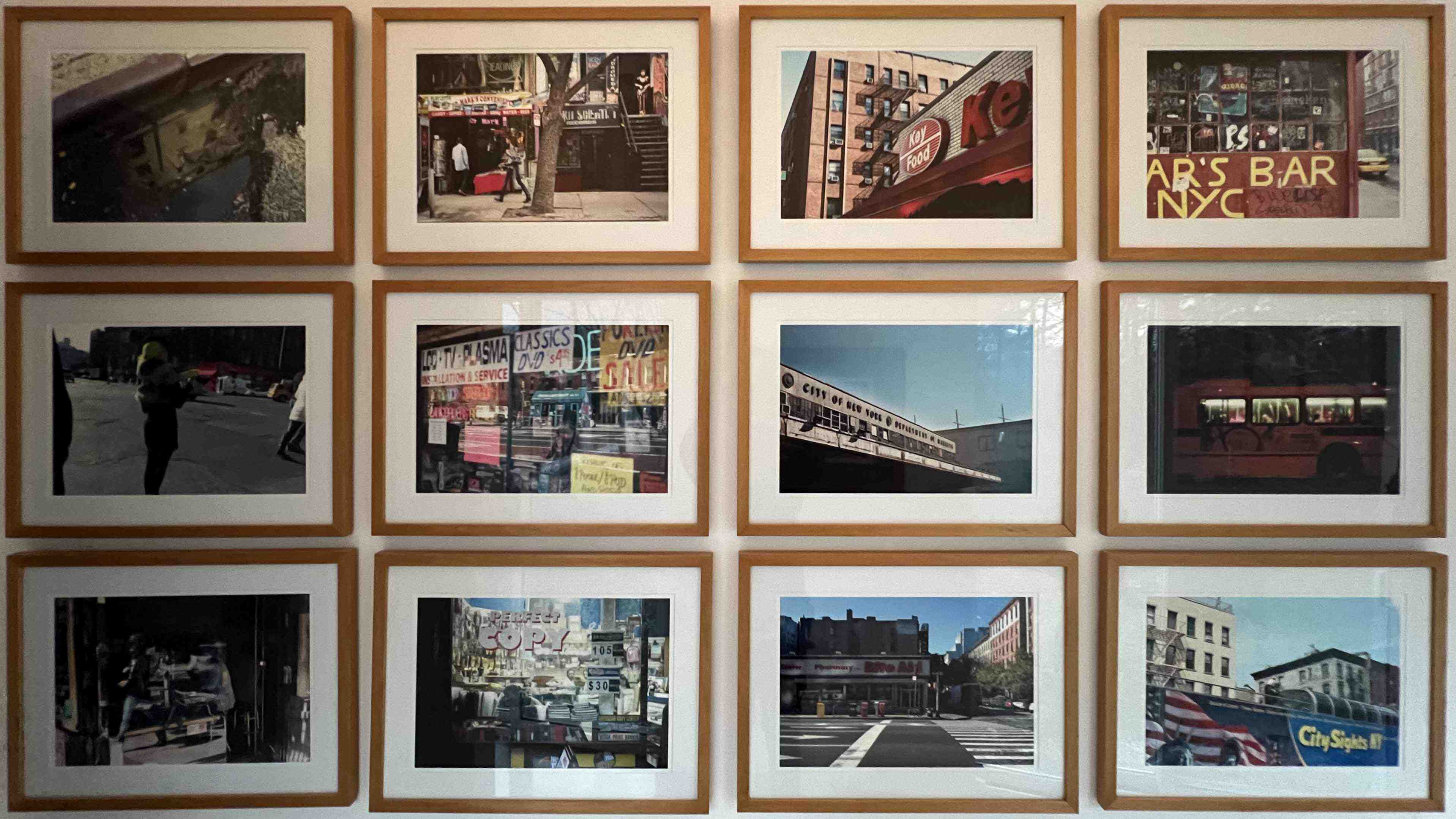
Phillip Kalantzis-Cope, East Village Scenes, 2006-2012.
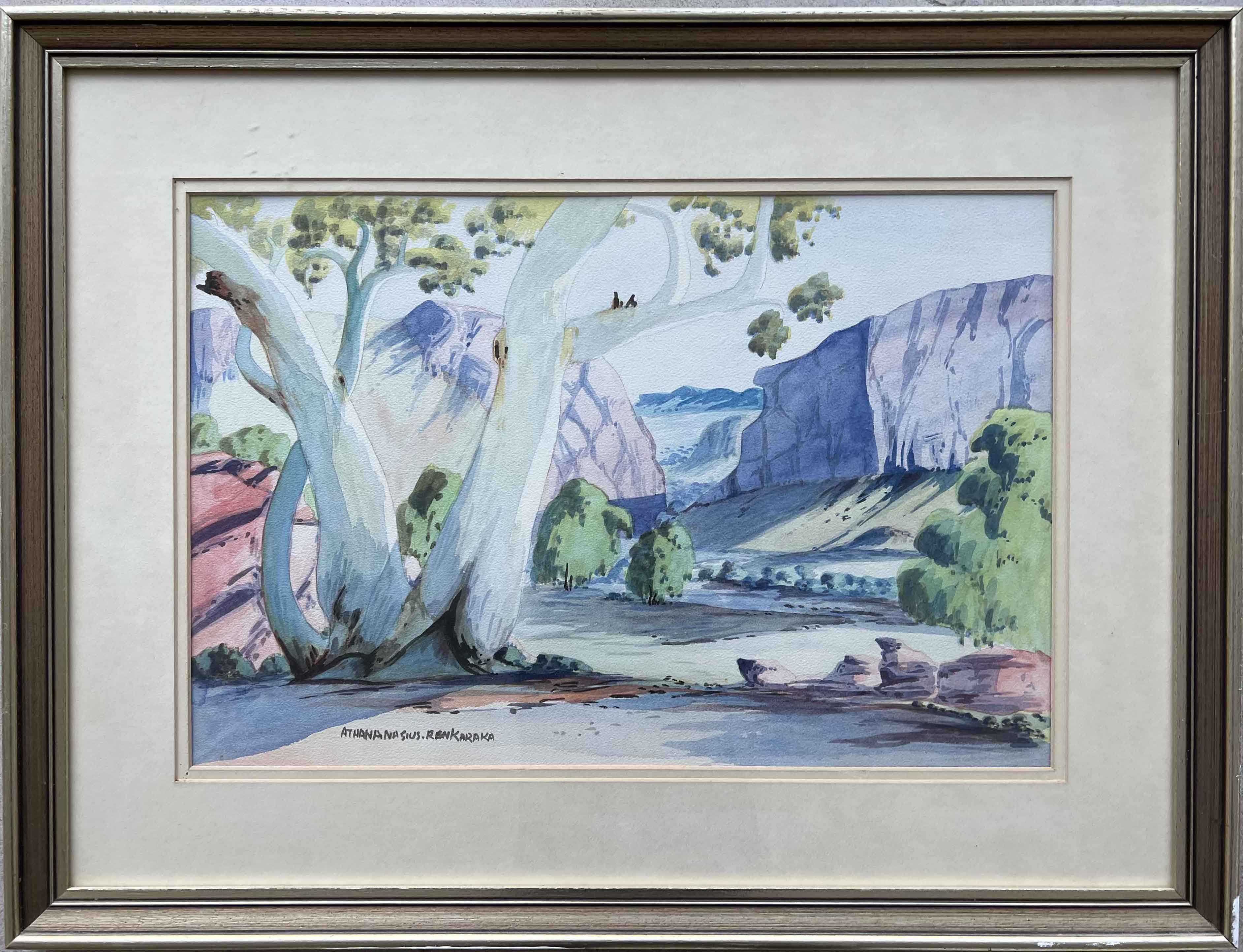
Athanasius Titus Renkaraka (1944-1989). Glen Helen Gorge, Finke River, Western MacDonnell Ranges, 1963. Purchased Alice Springs 1991.
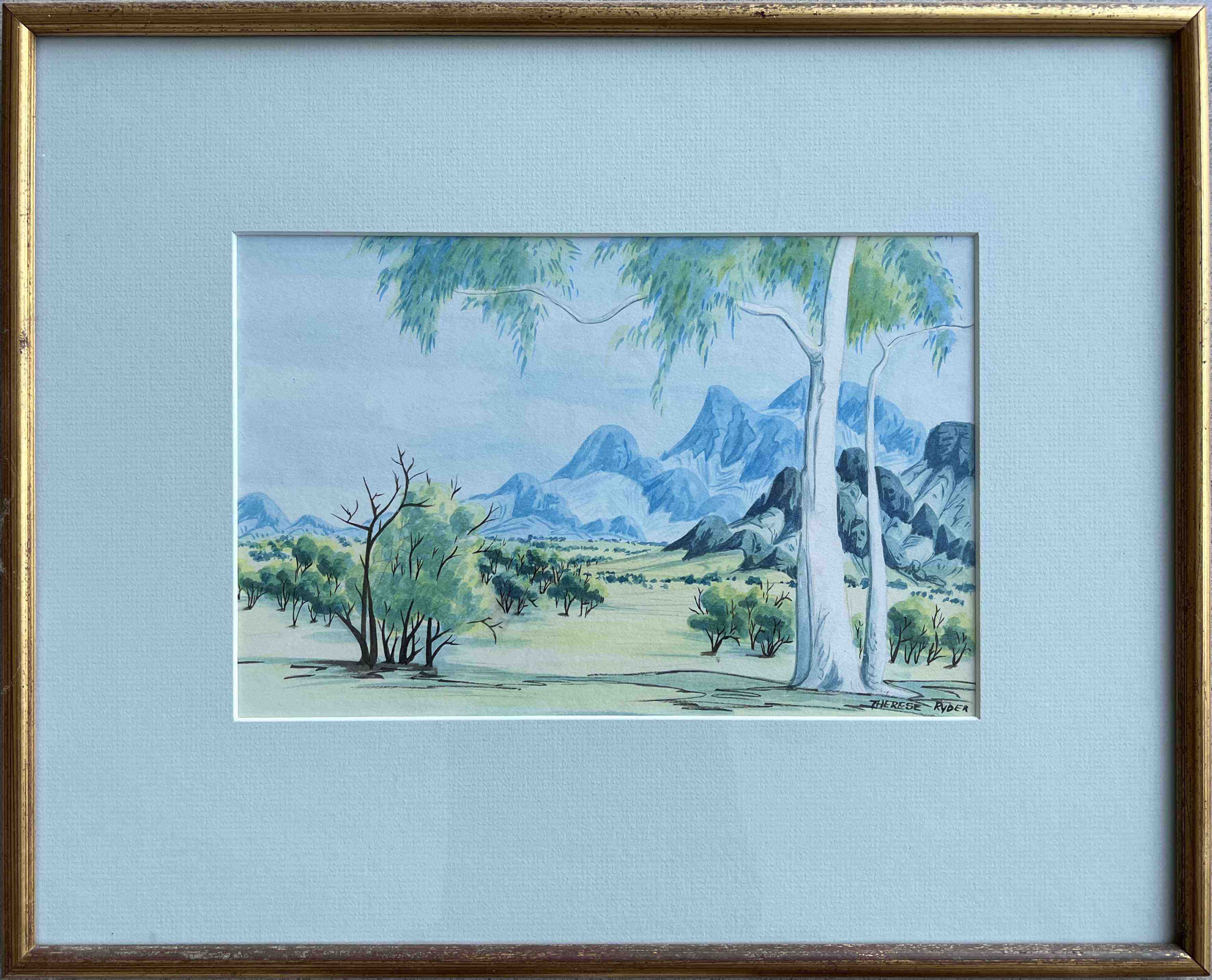
Therese Ryder (1946- ), Landscape South of Alice Springs, c.1984. Purchased Alice Springs 1991.
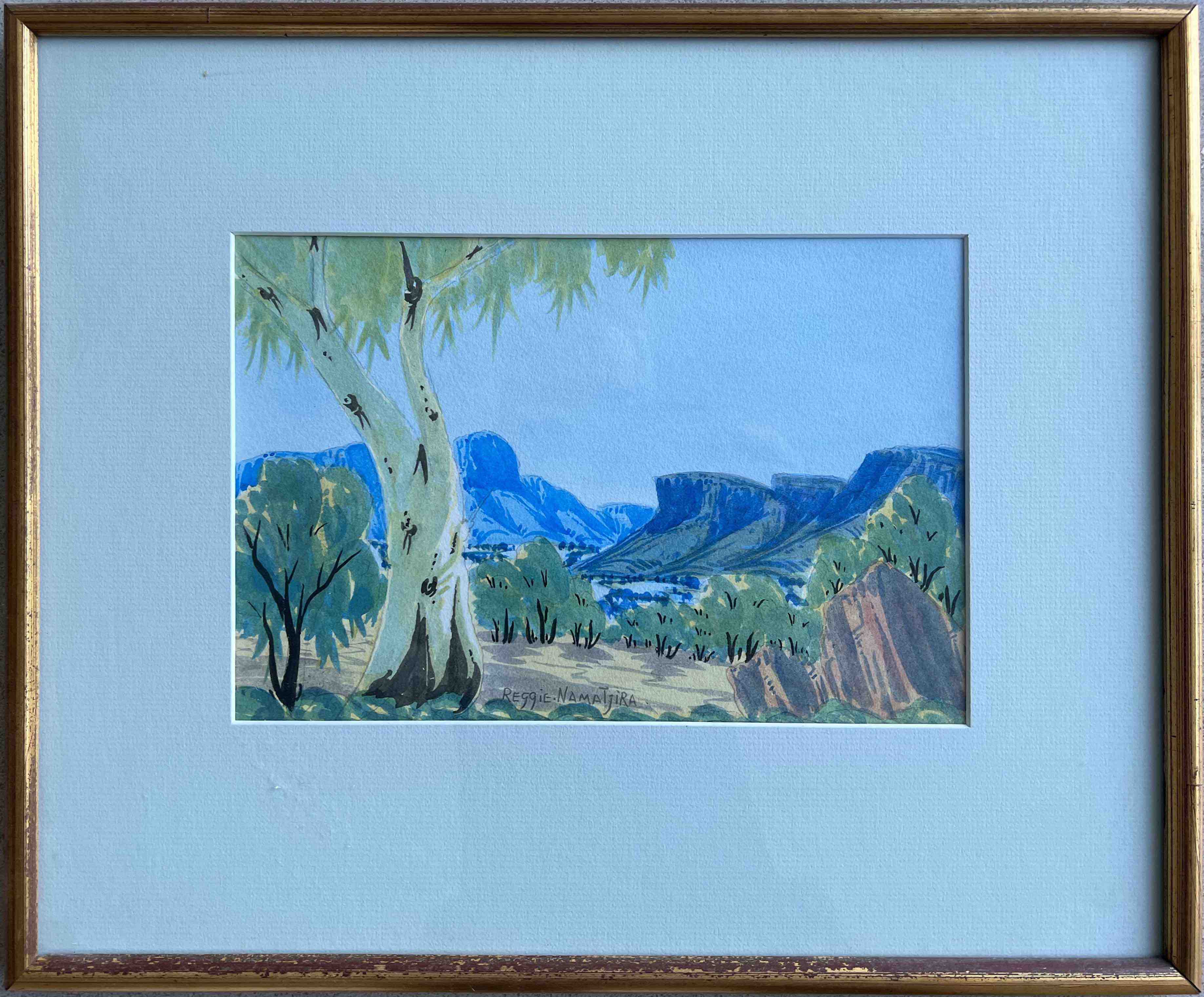
Reggie Namatjira (grandson of Albert Namatjira, 1946- ), Western MacDonnell Ranges, c.1982. Purchased Alice Springs 1991.
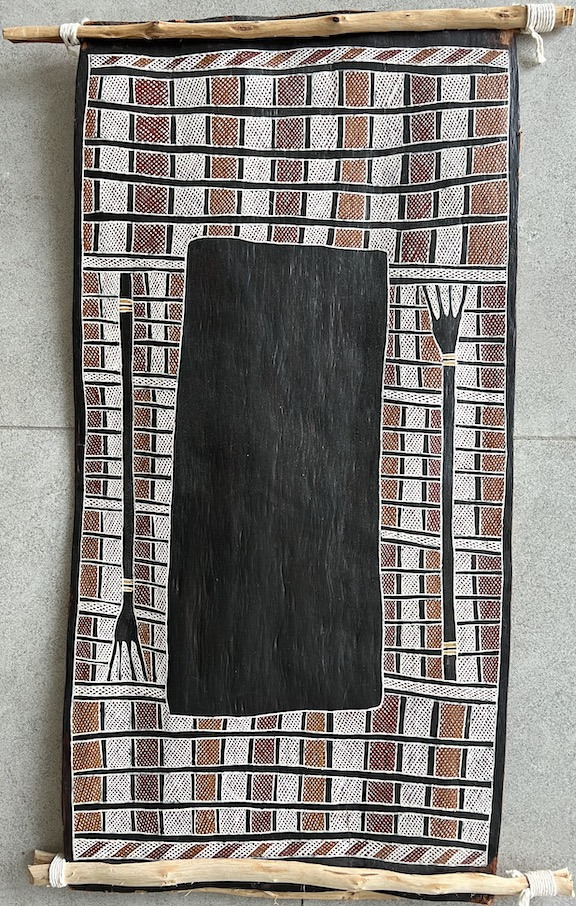
Rerrkirrwaŋa Munuŋgurr (1971), Ceremonial Ground, c.1991. The center of the image is the ceremonial ground used for funerals, a time and place where people meet to make sense of life and death. The crosshatching encloses what would be, without it, a barely comprehensible black space. The ceremonial space is within the image, but also ambiguously it is constituted as such by its frame. The crosshatching marks an outside as well. It is there to add sense to the black. Among its many references: the shimmering surfaces of the freshwater lagoons that surround the ceremonial site, providing food and life. Across this threshold, the deceased soul returns to the sacred waters. And less abstractly, the spears with which fish are caught, and in the crosshatching, the patterns of the fish nets. Then more abstractly, meanings where a person is a place is a sacred totem, and where a place is a song is a ceremonial dance and now also a bark painting.
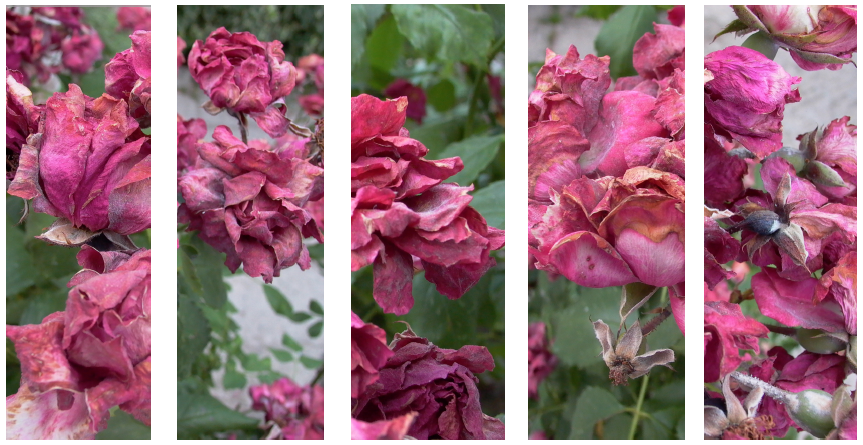
Bill Cope, Perithori Roses, 2010.
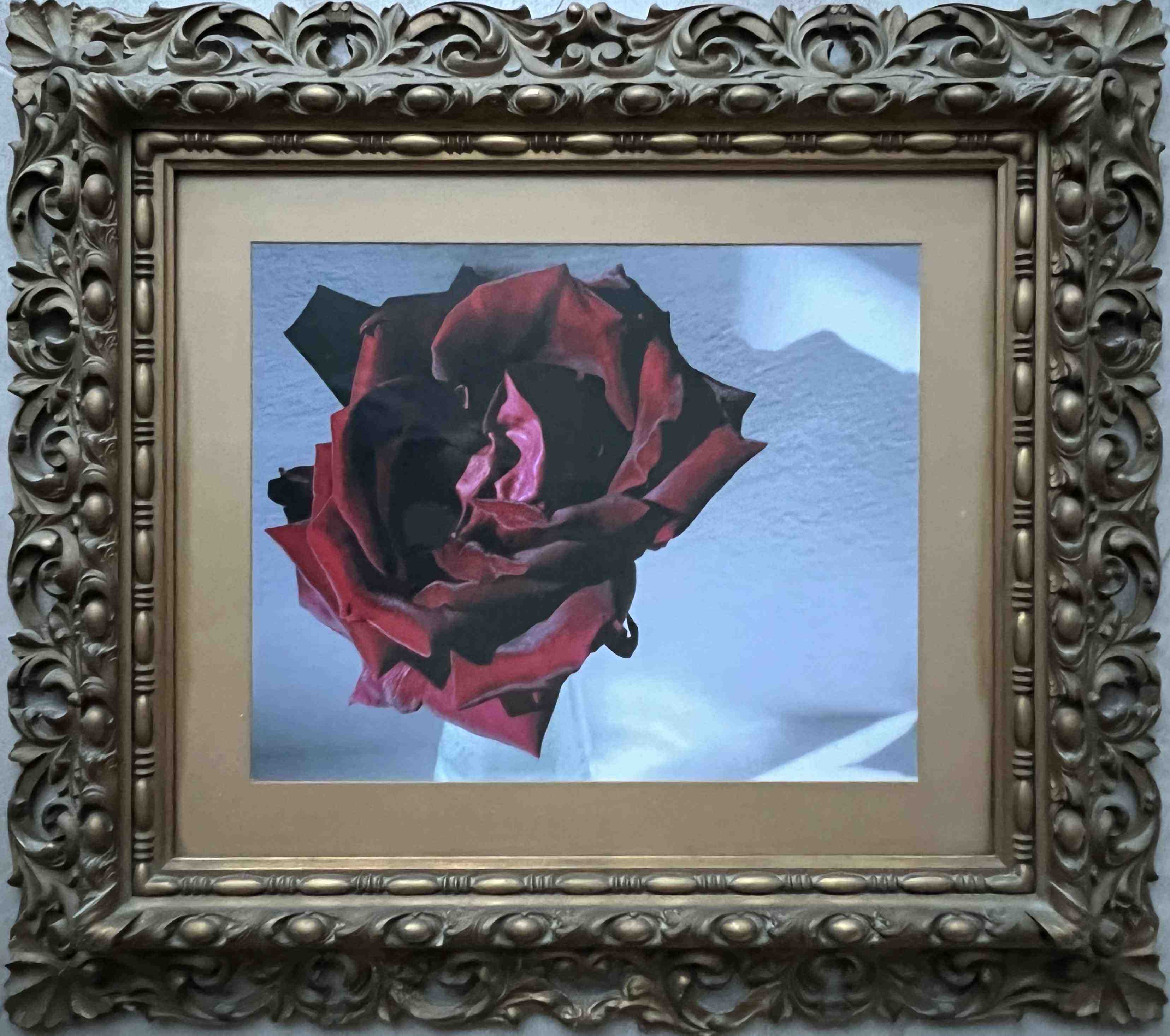
Bill Cope, Yiayia Diamando's Scented Rose, 2010
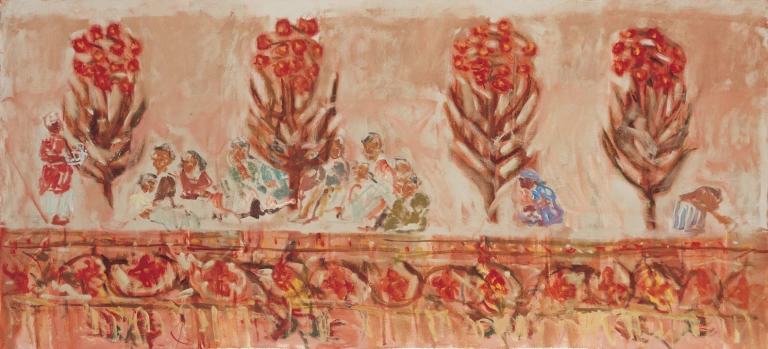
Leslie Morgan, (1955-2017), Shawl Design, 2003. Les' Anglo-Indian-Australian family is portrayed on the shawl.
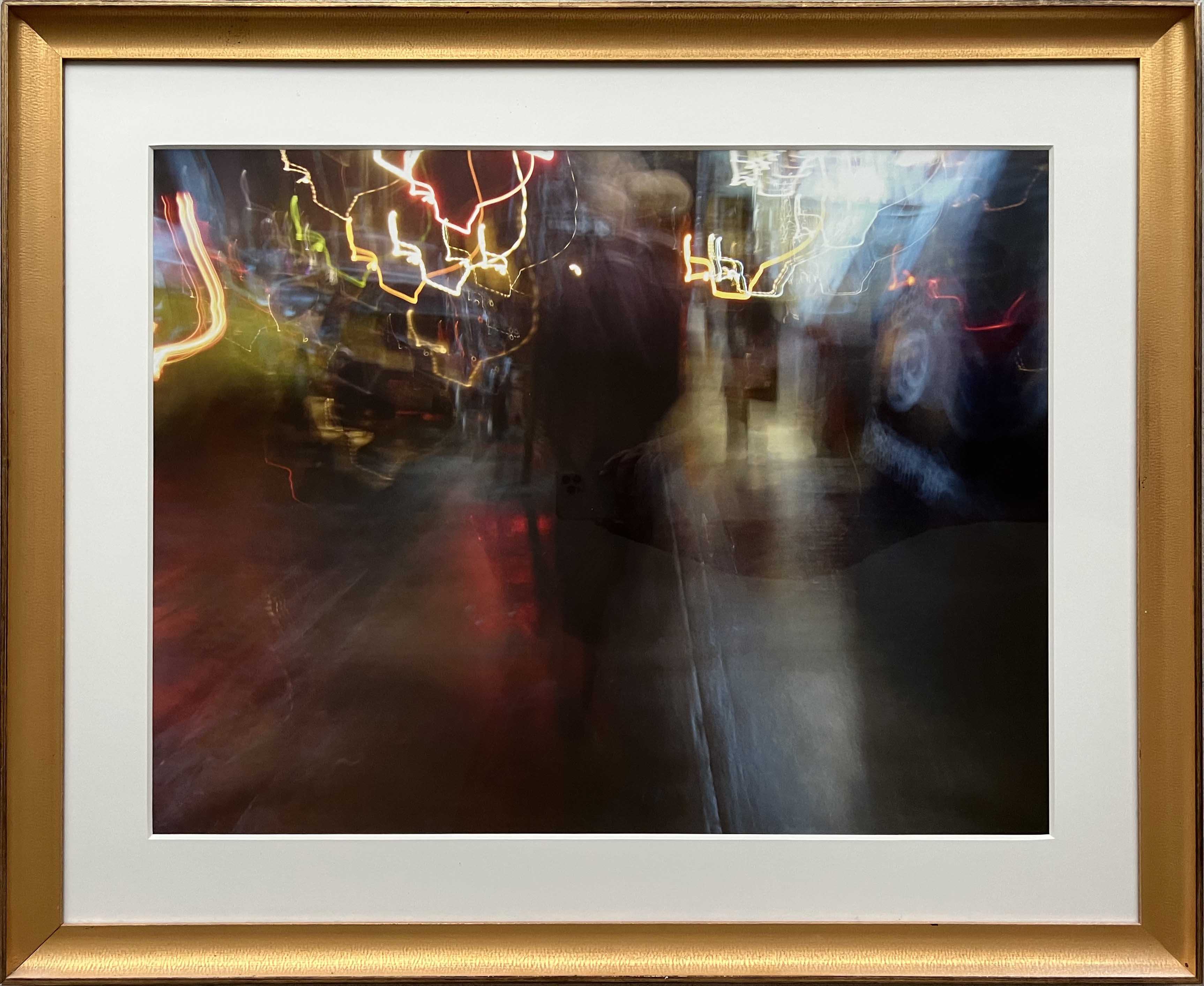
Phillip Kalantzis-Cope, New York Night, 2008.
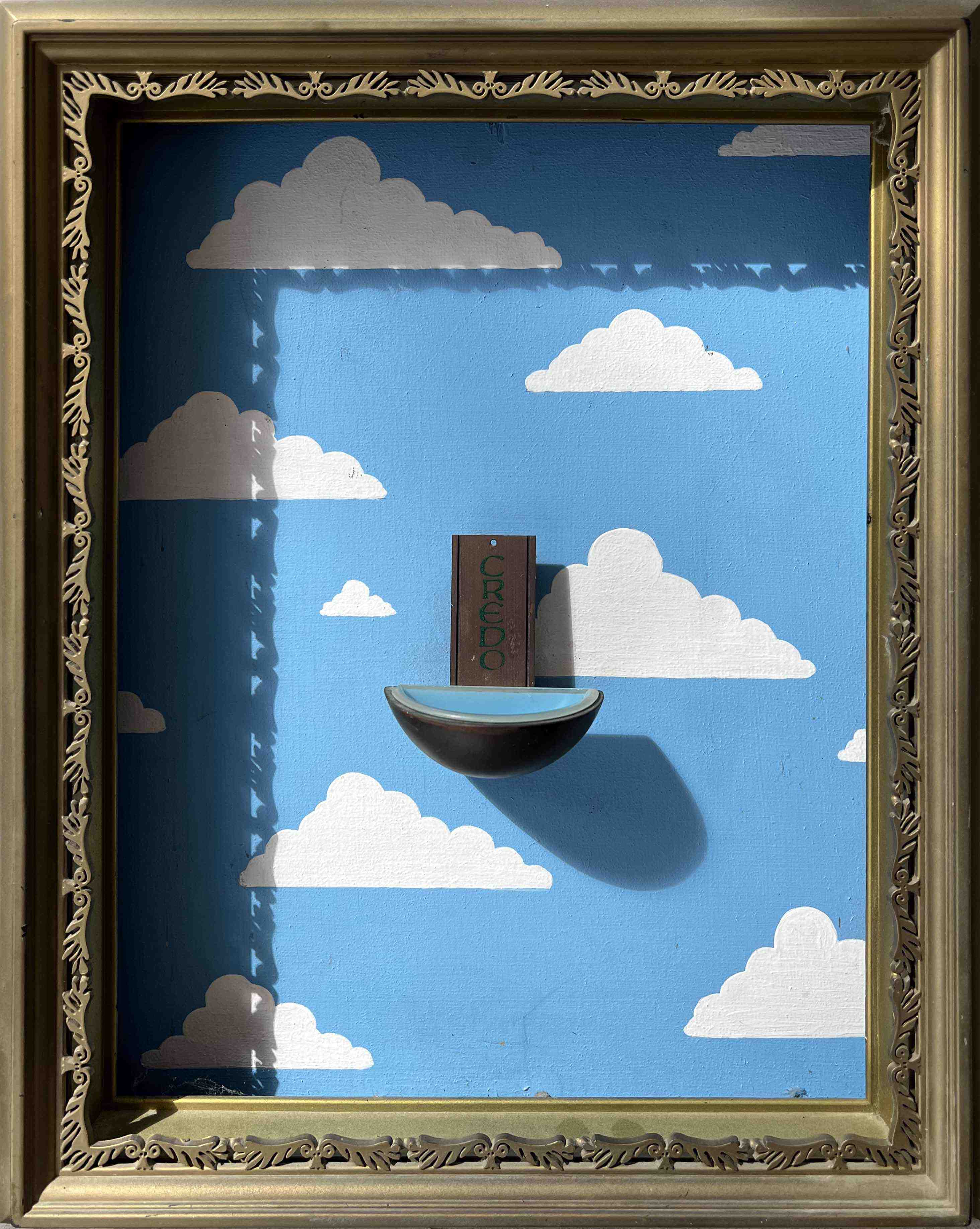
John Bleaney, Credo, 1986. John worked as a designer at Meglamedia, in Sydney.